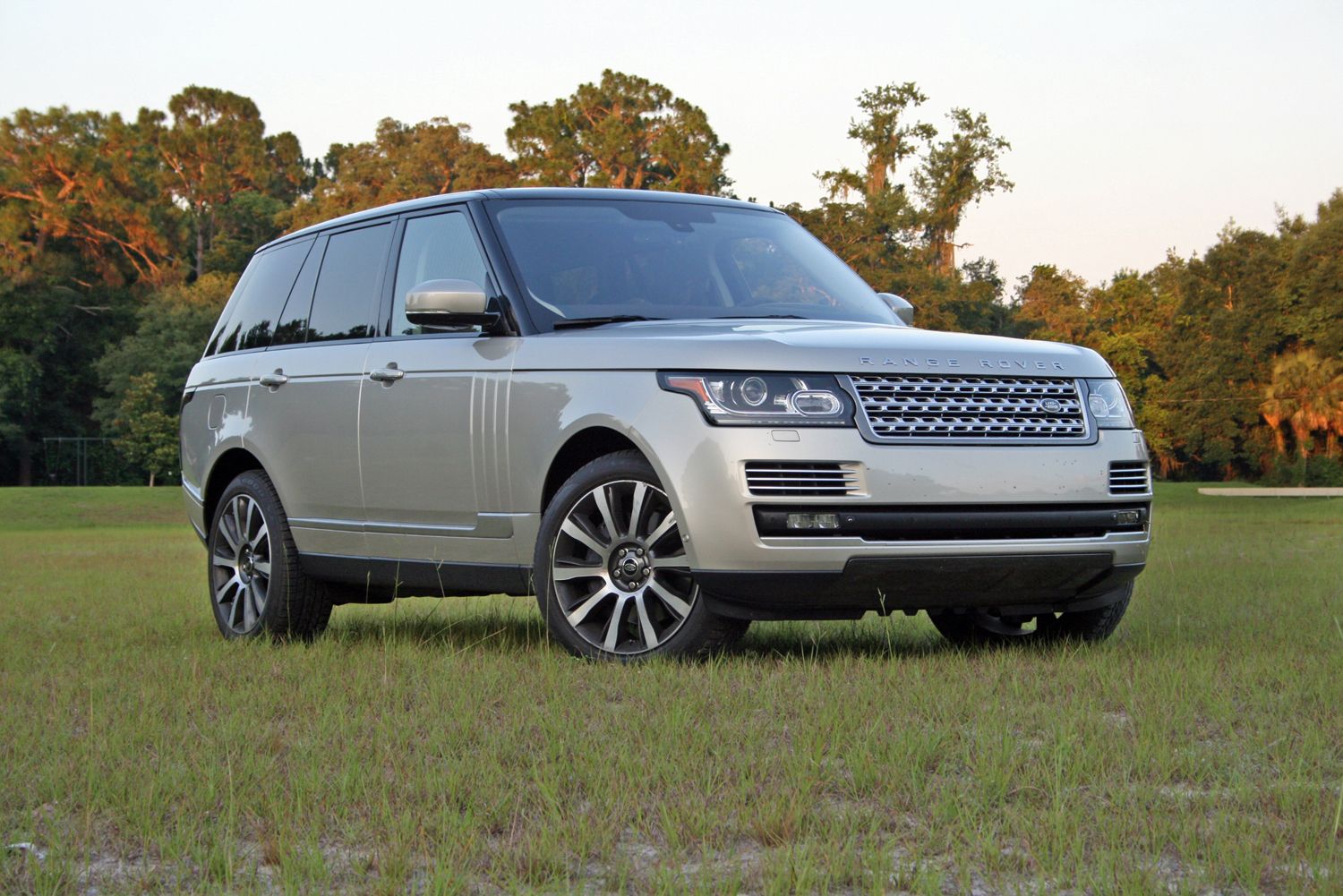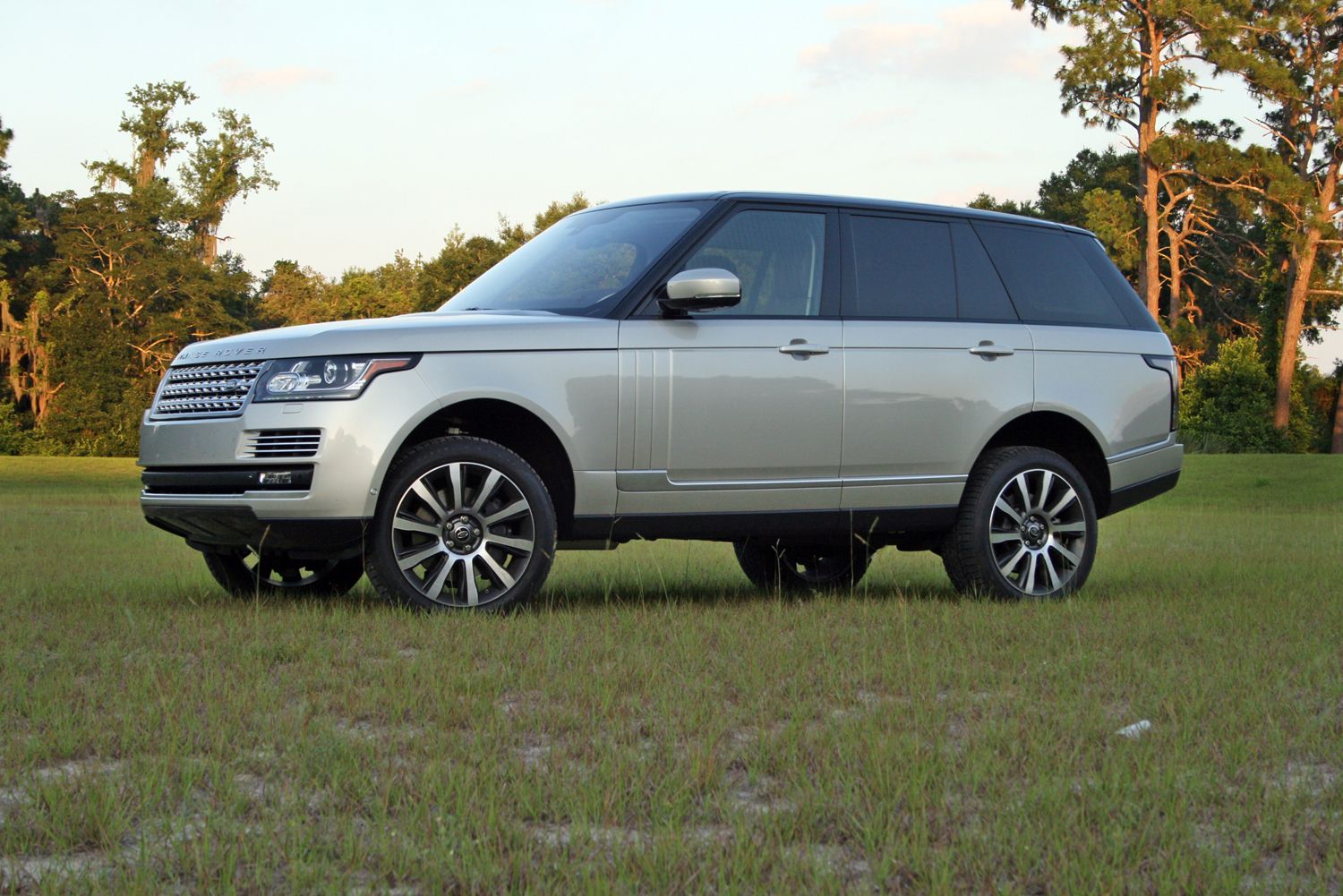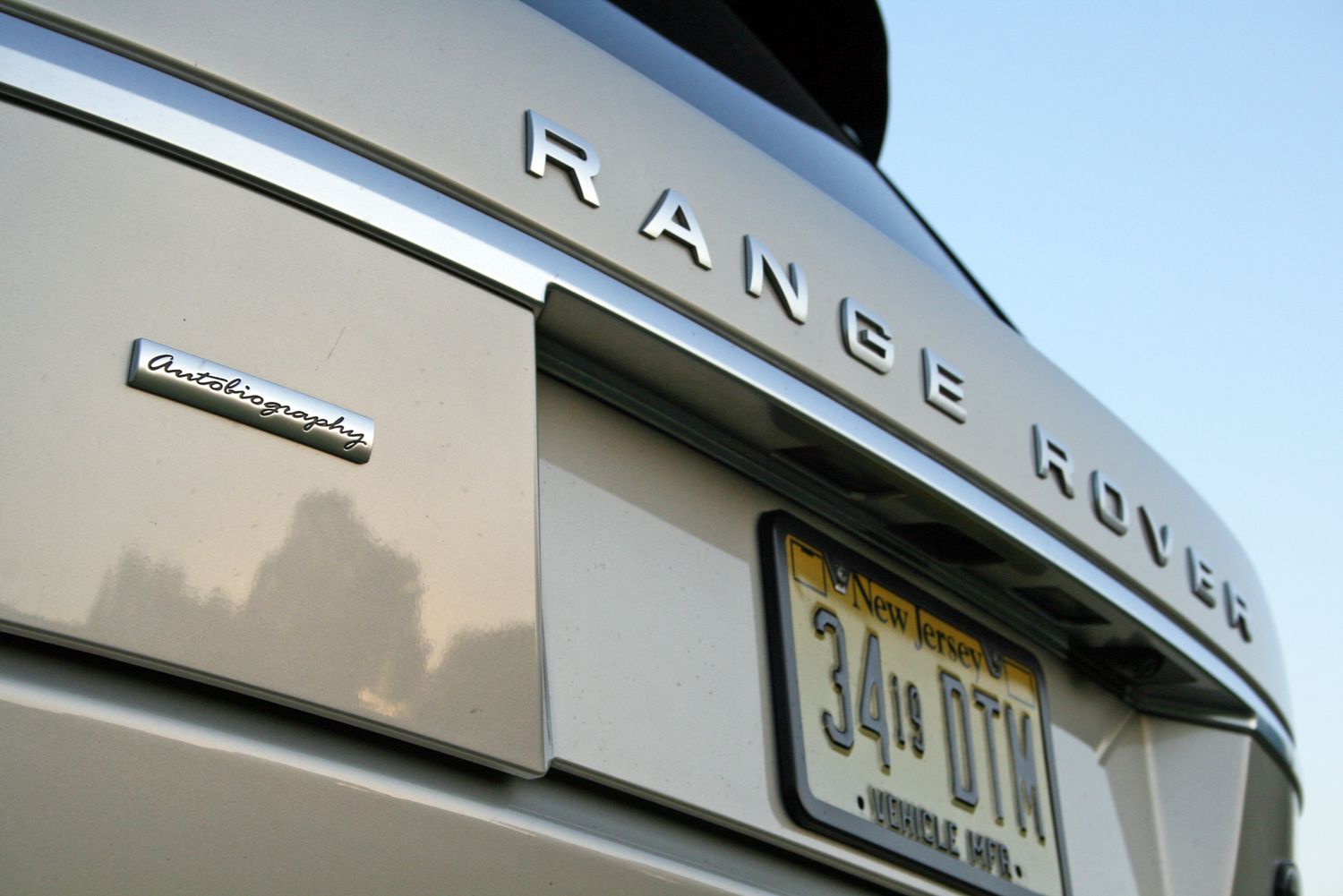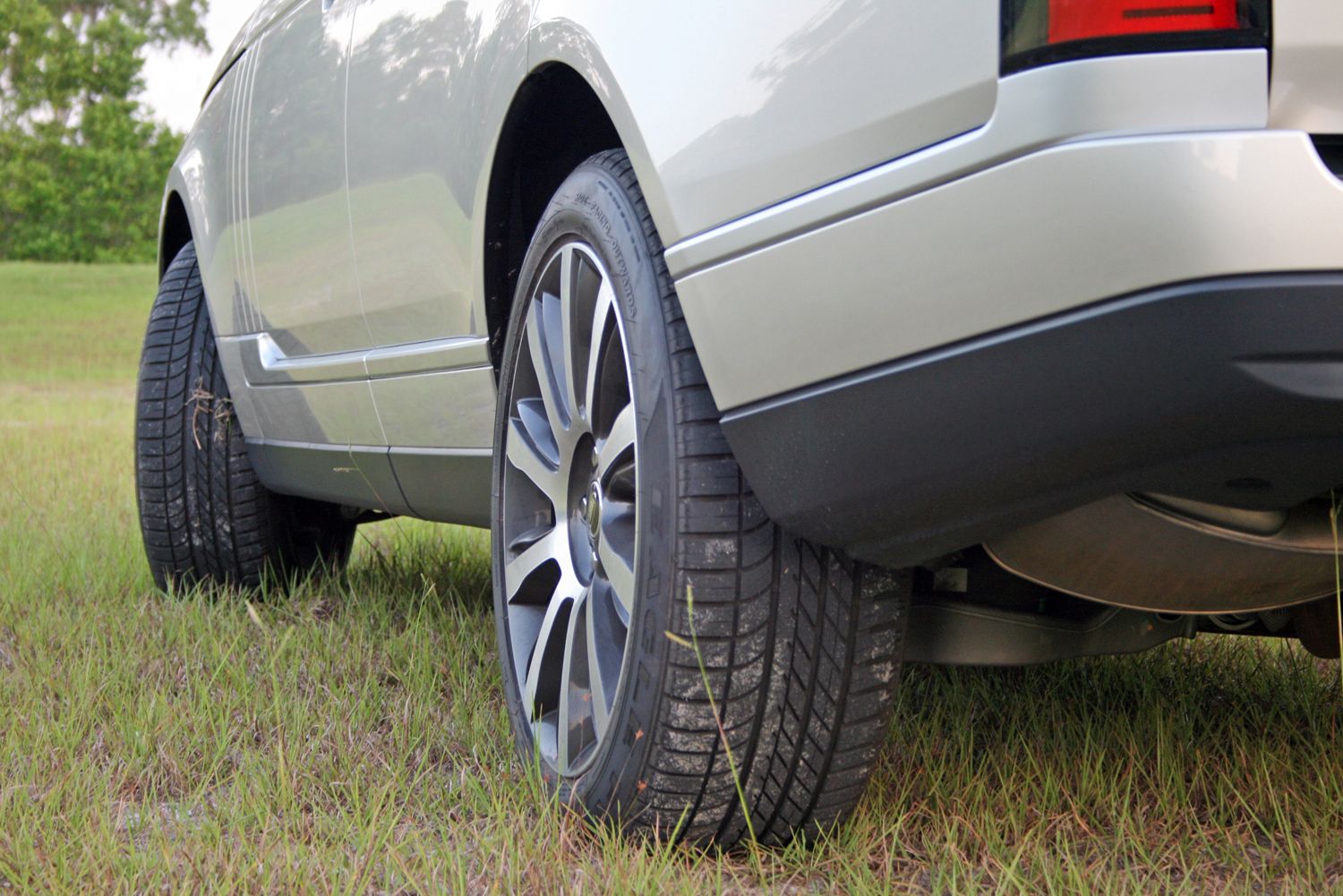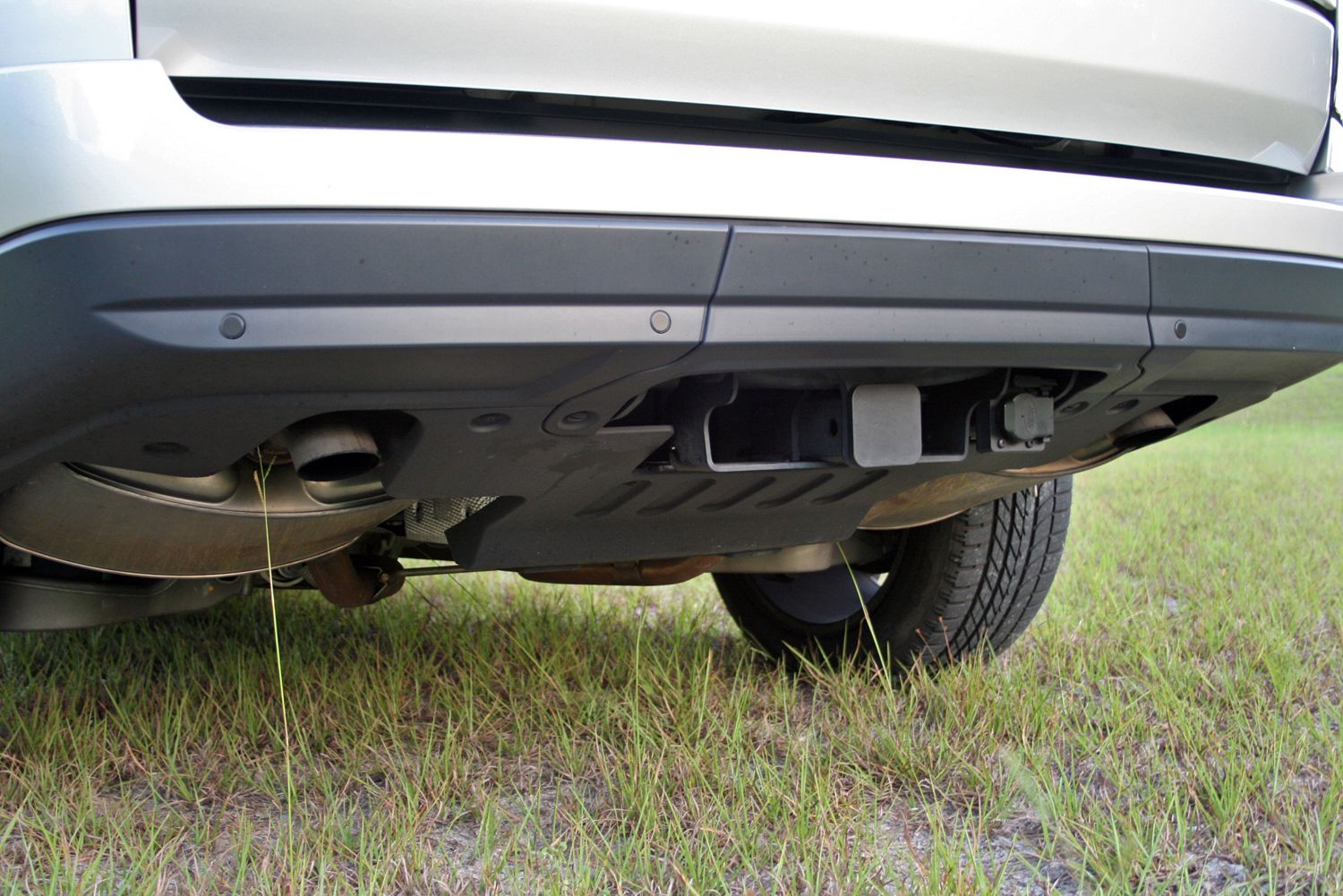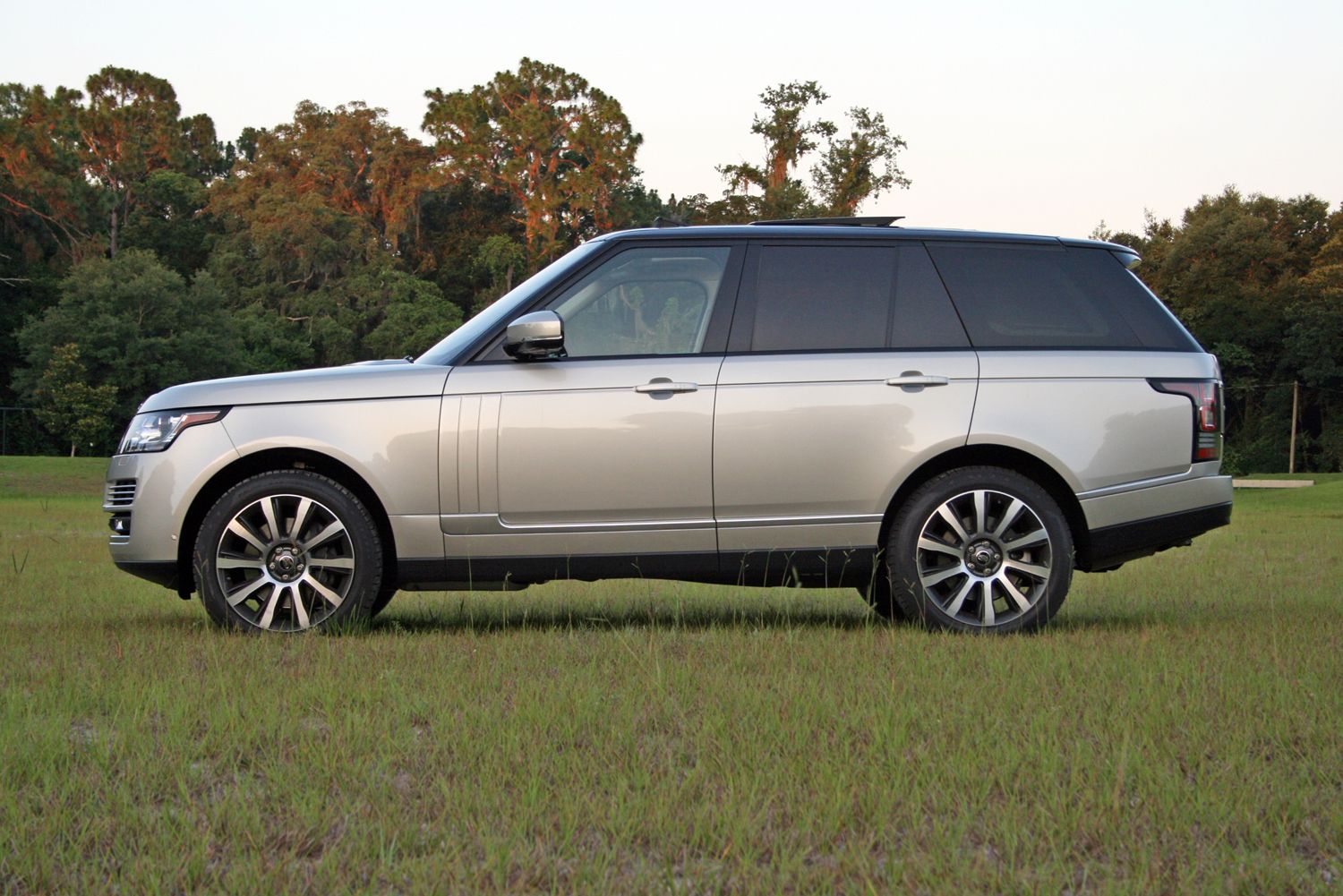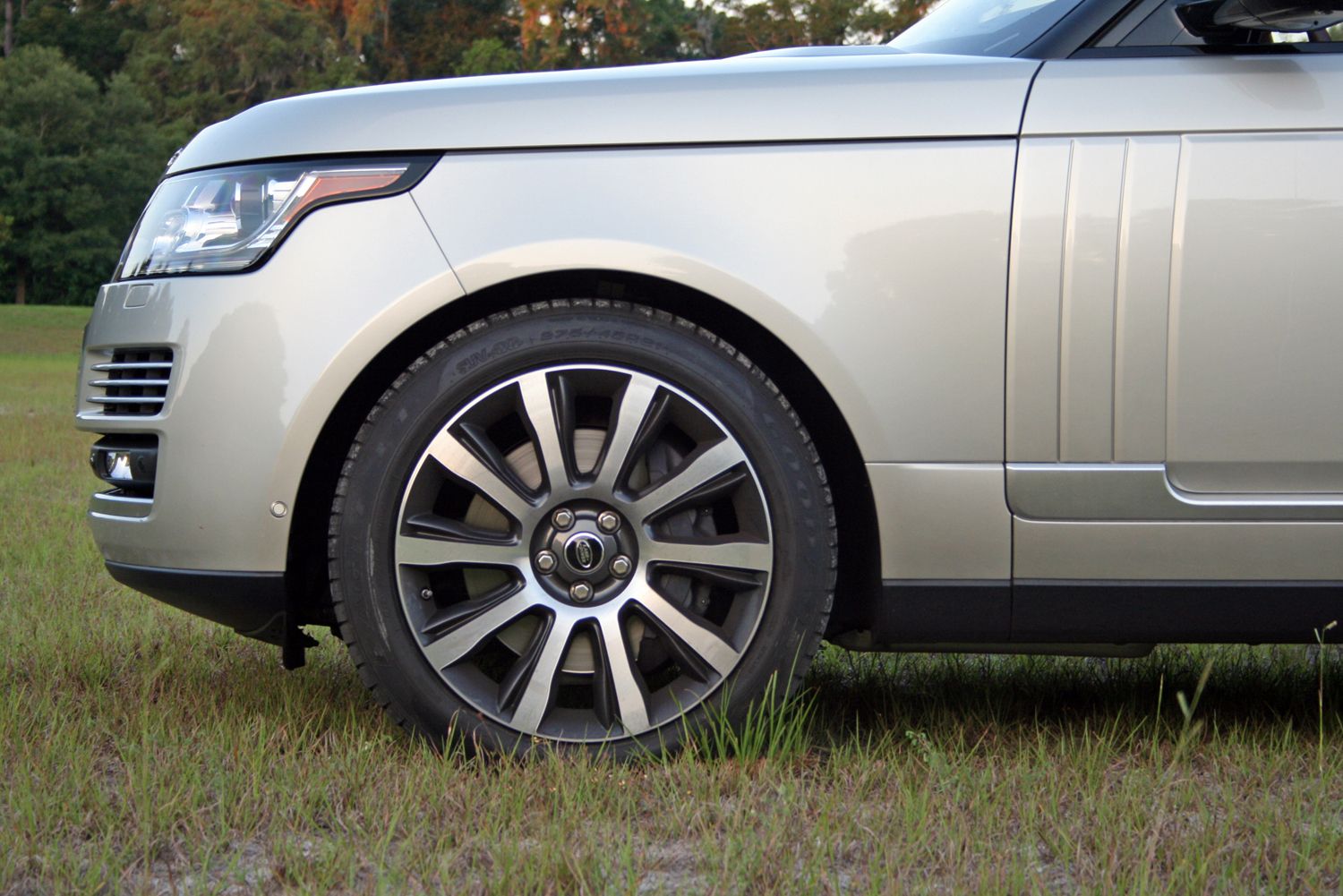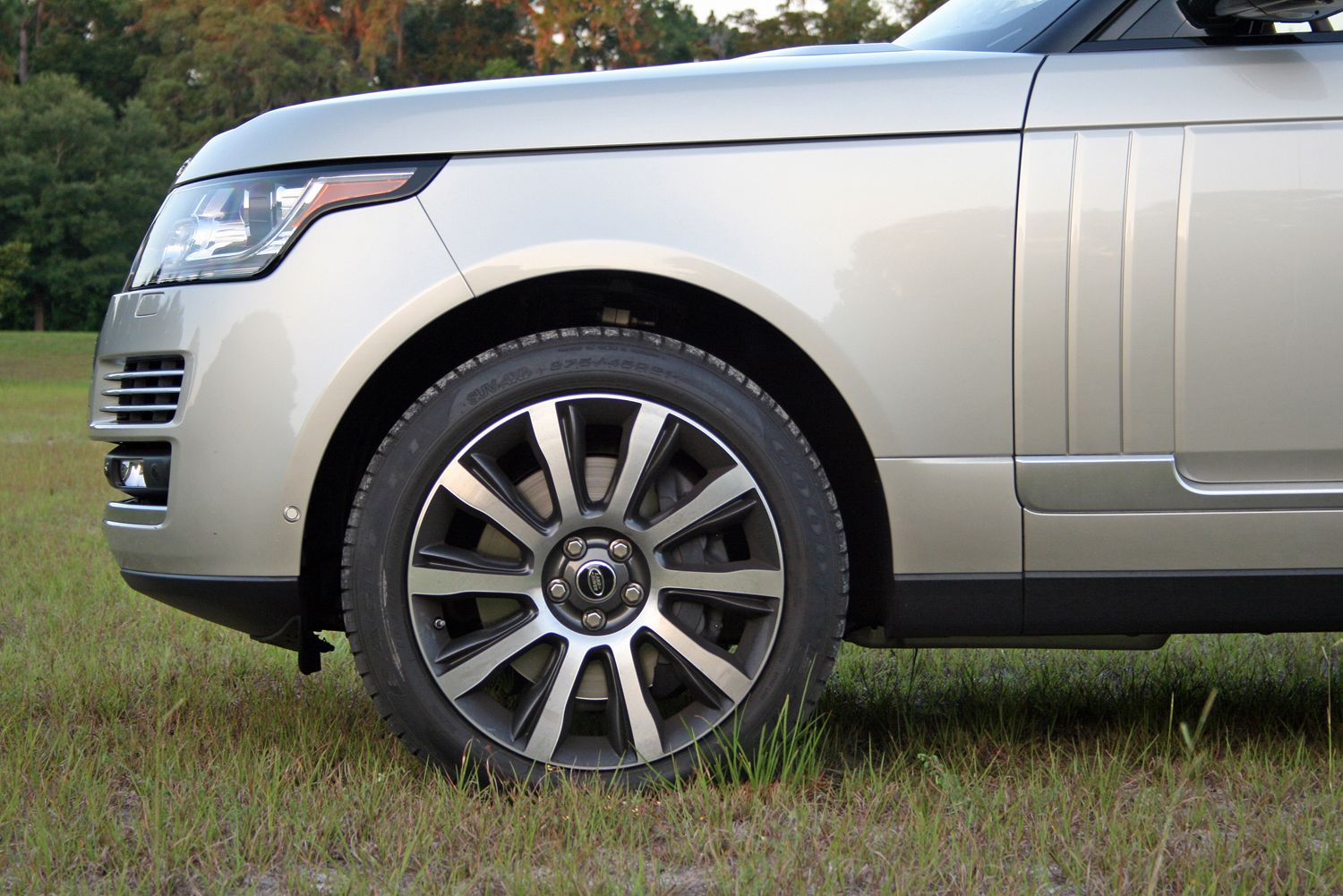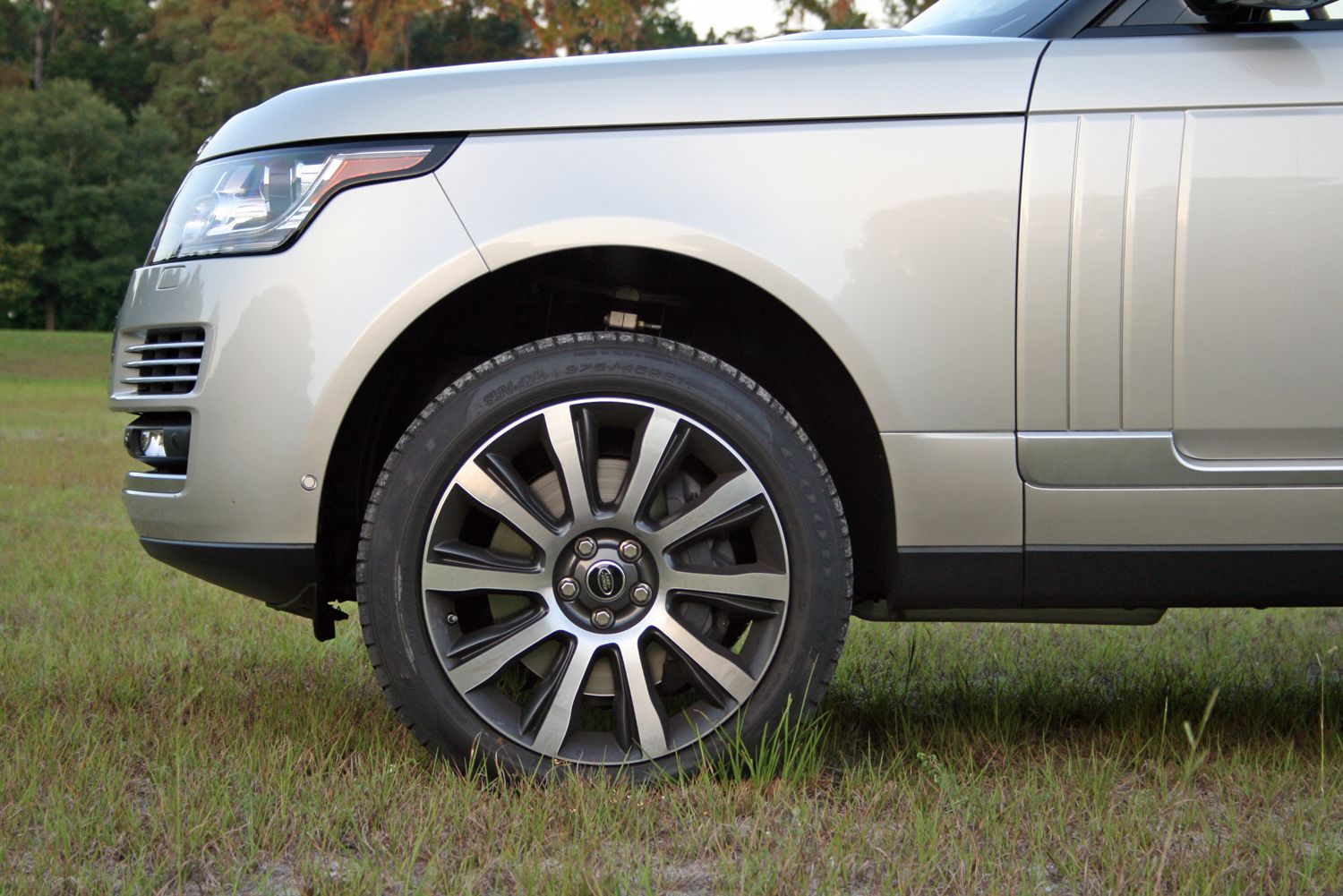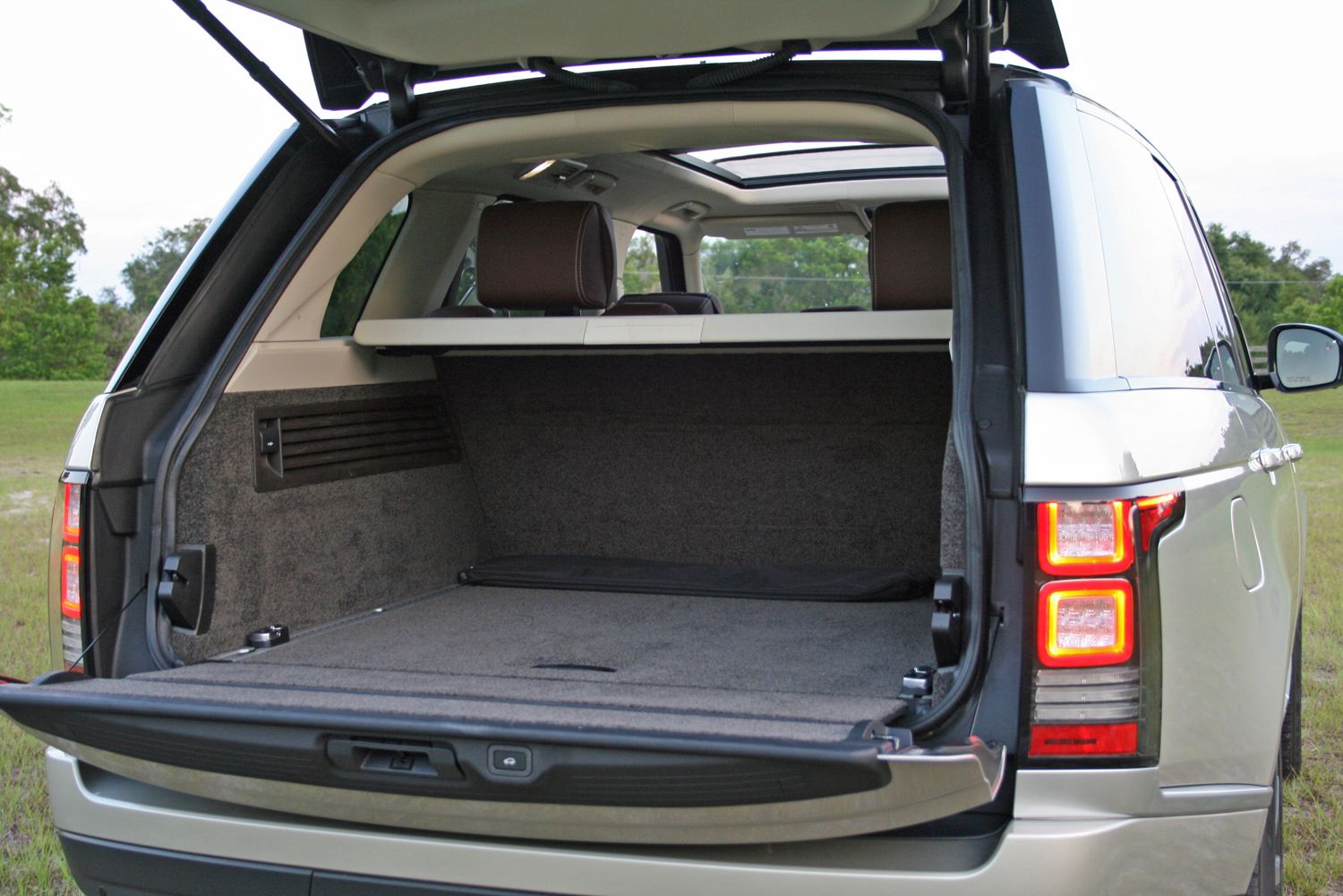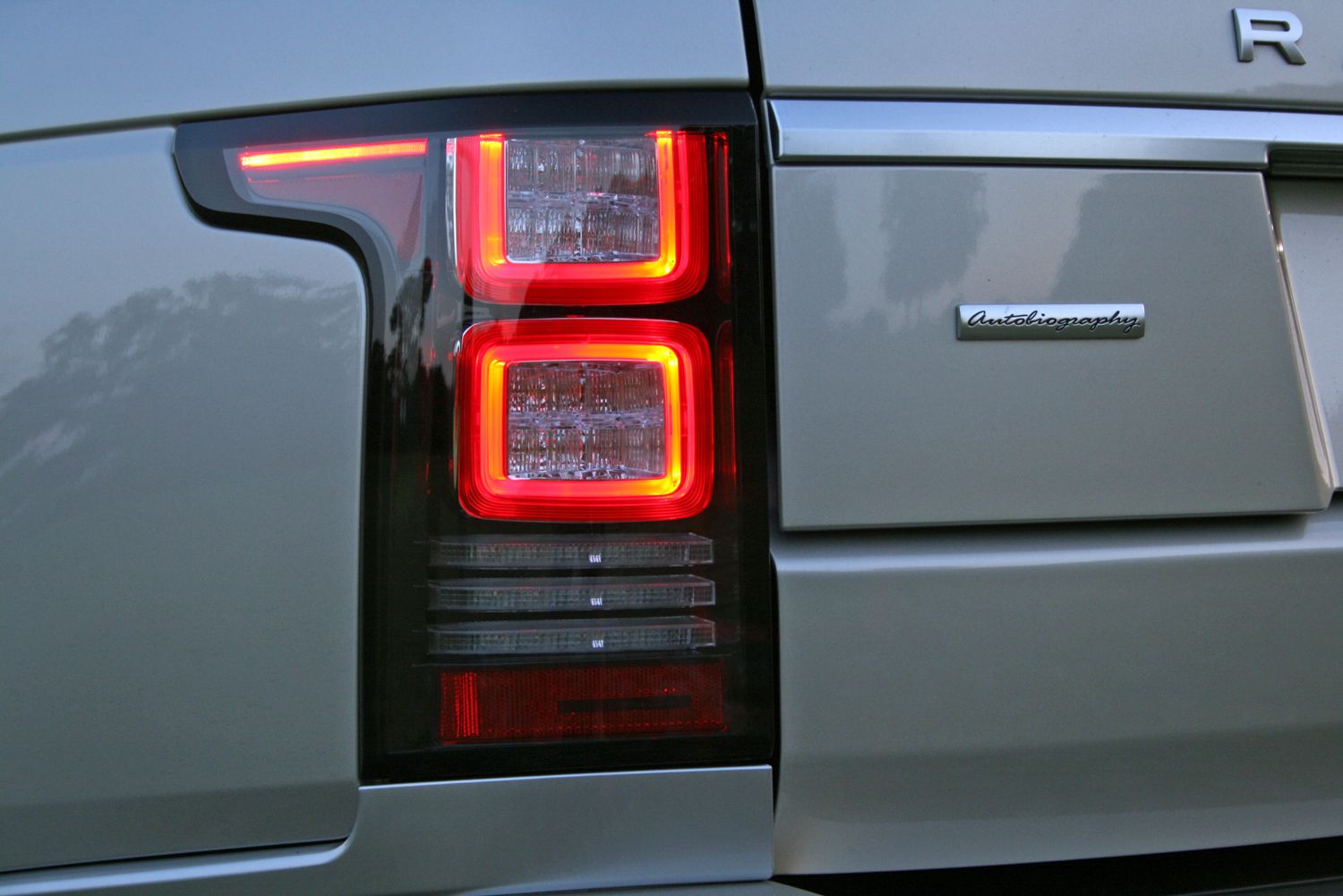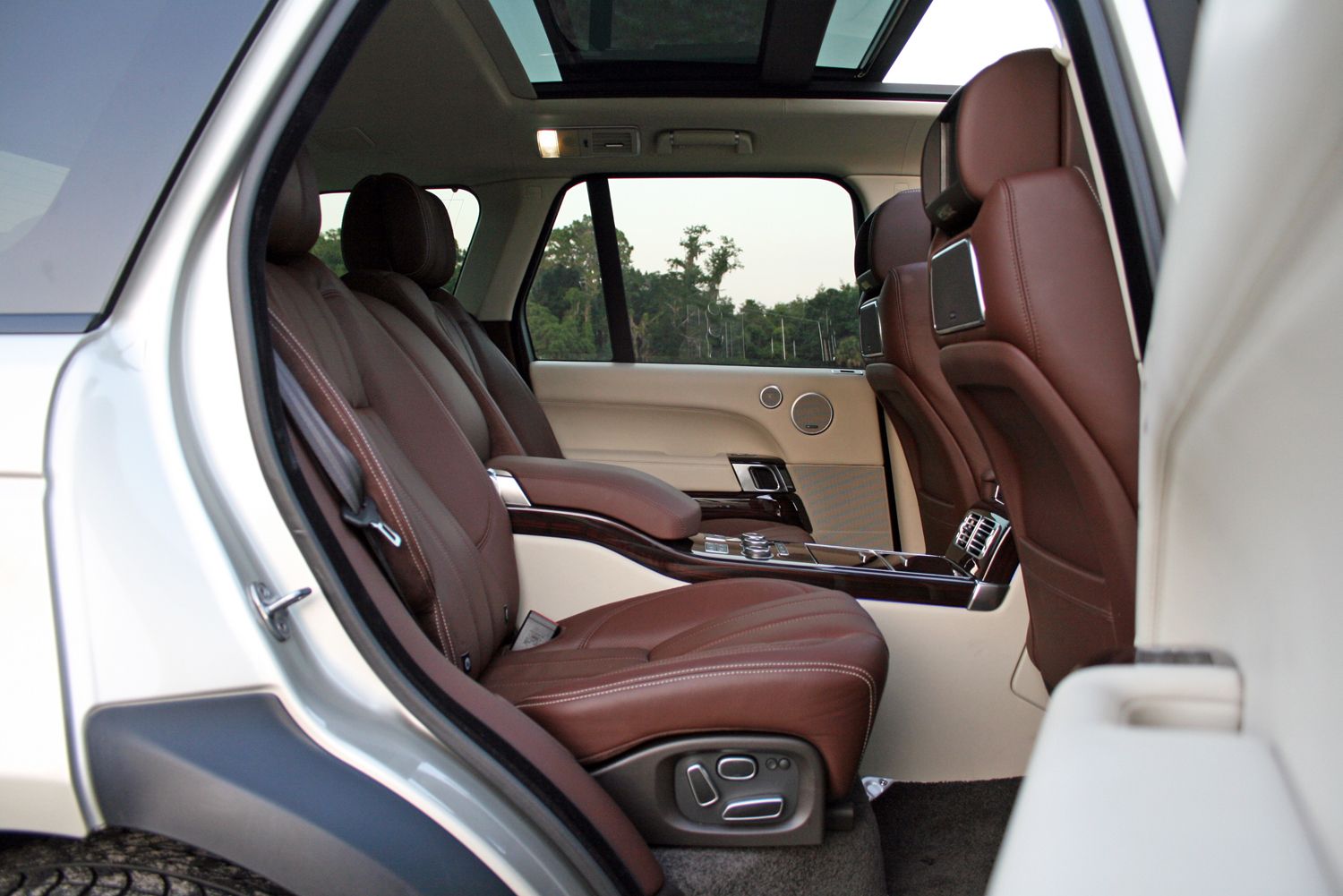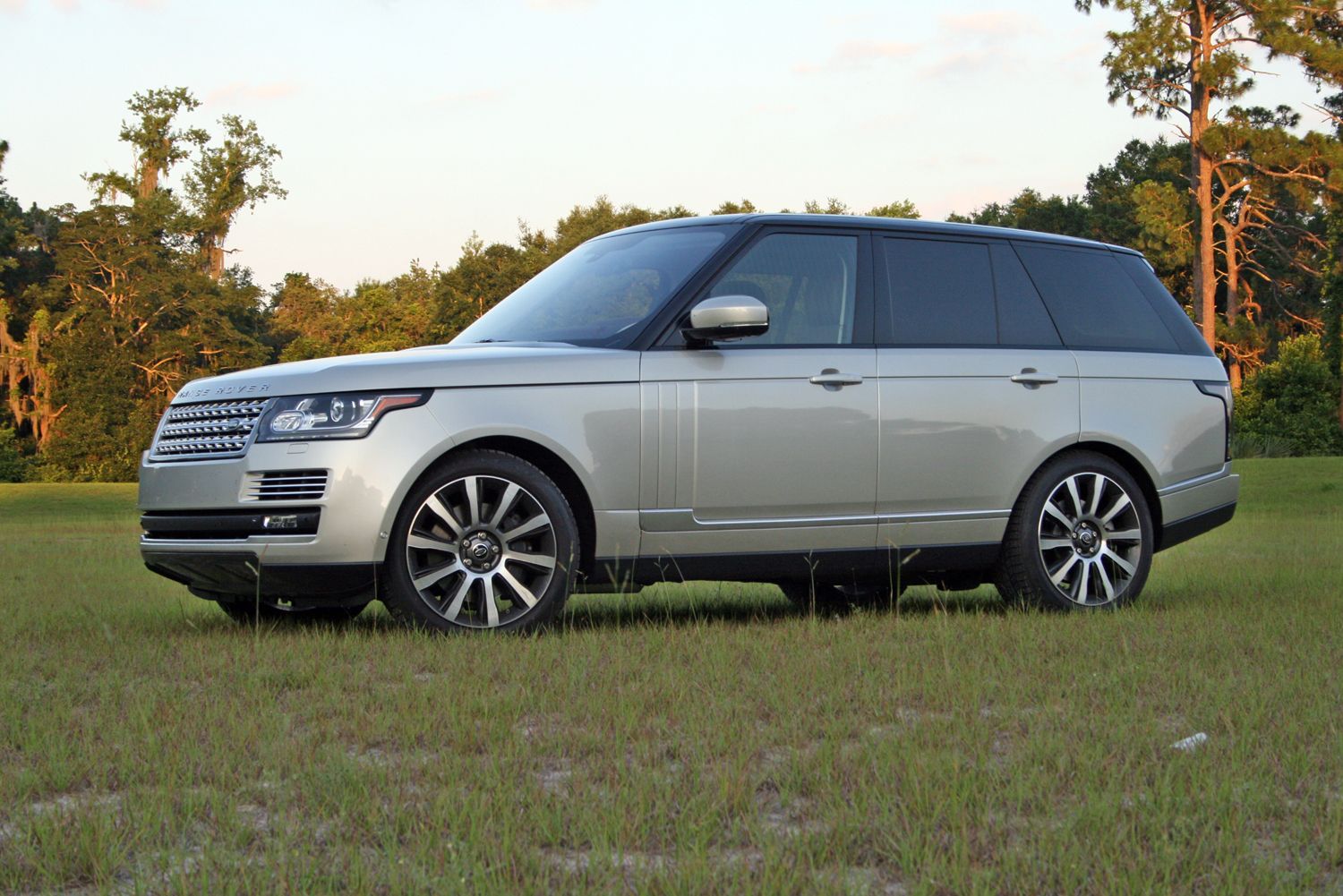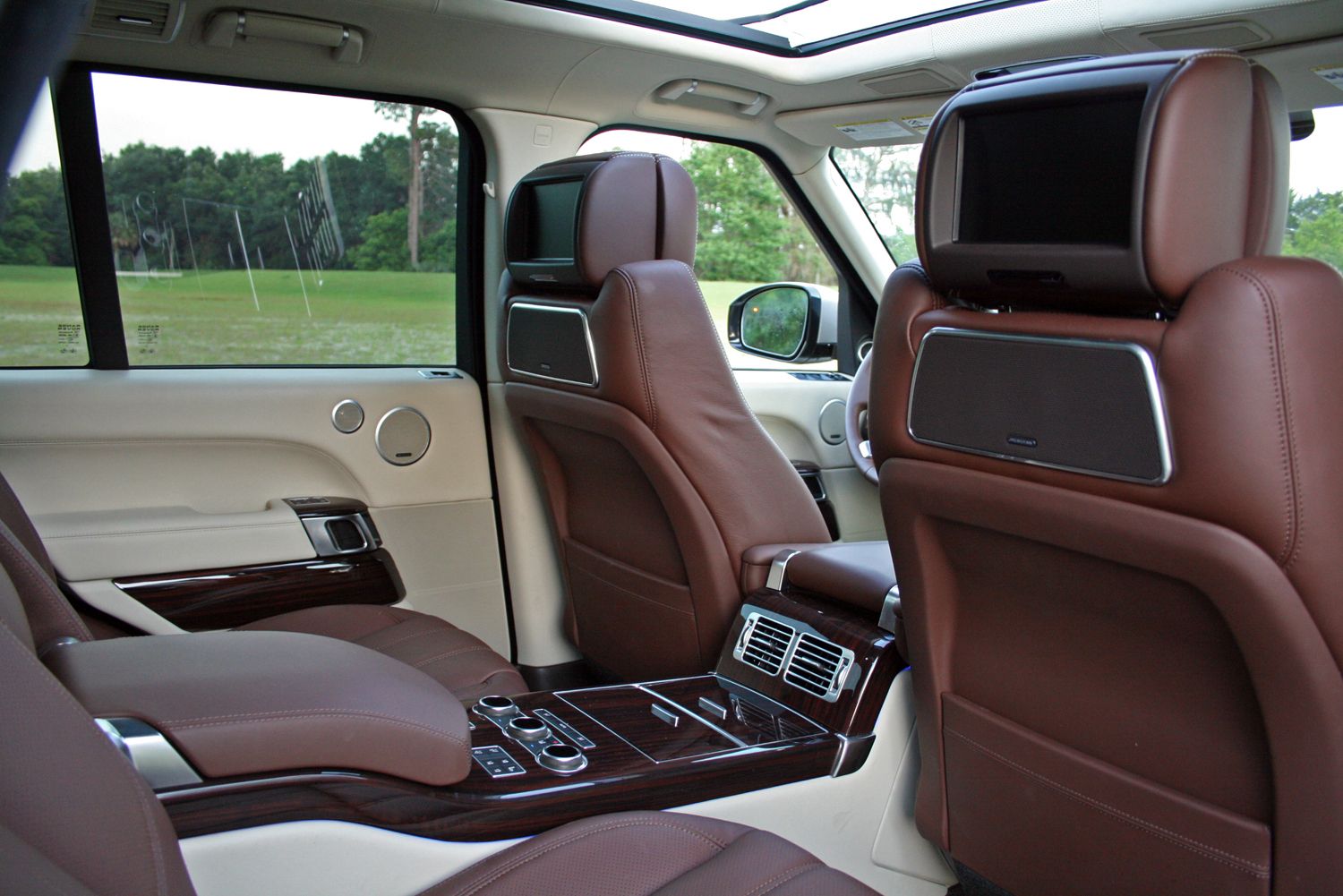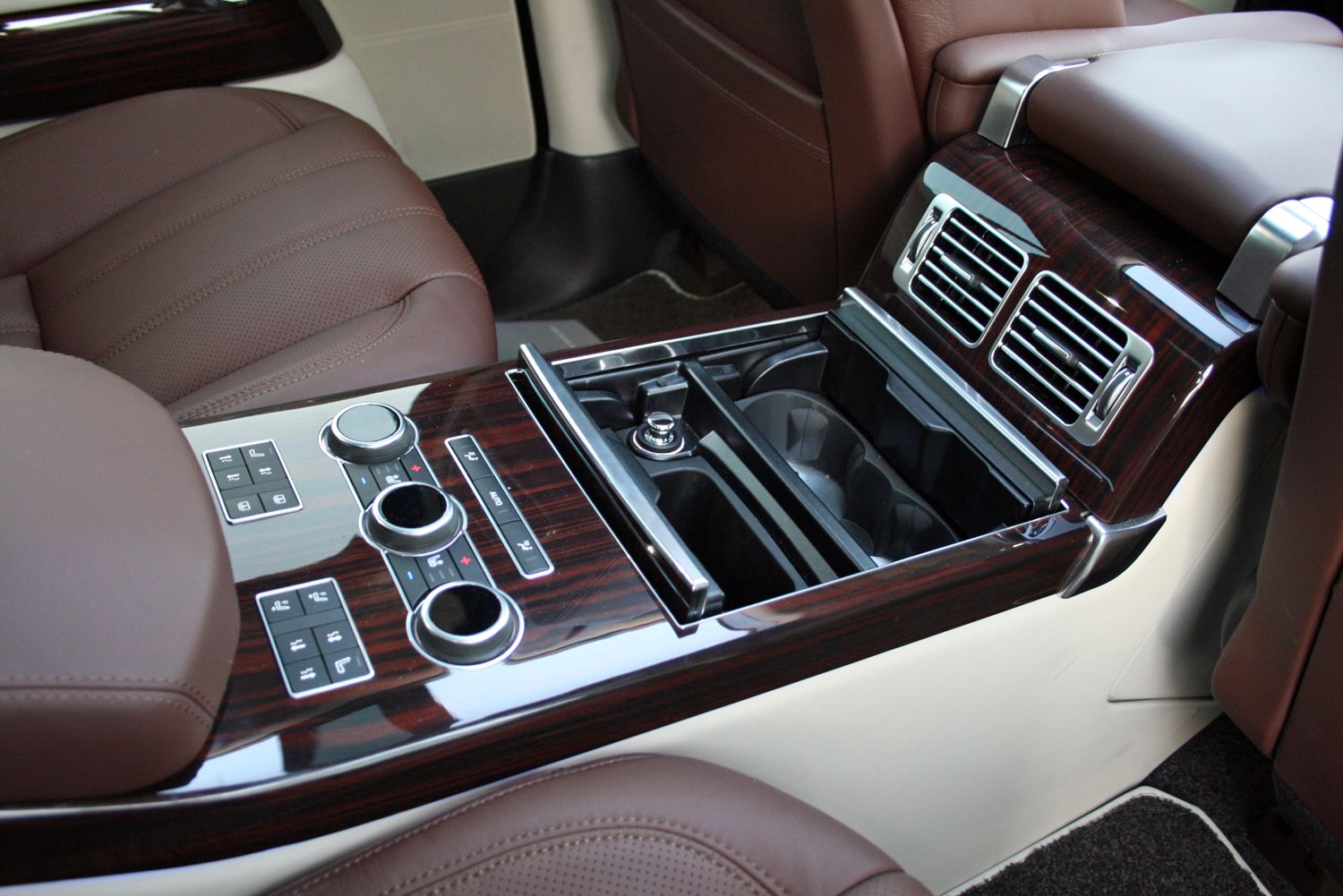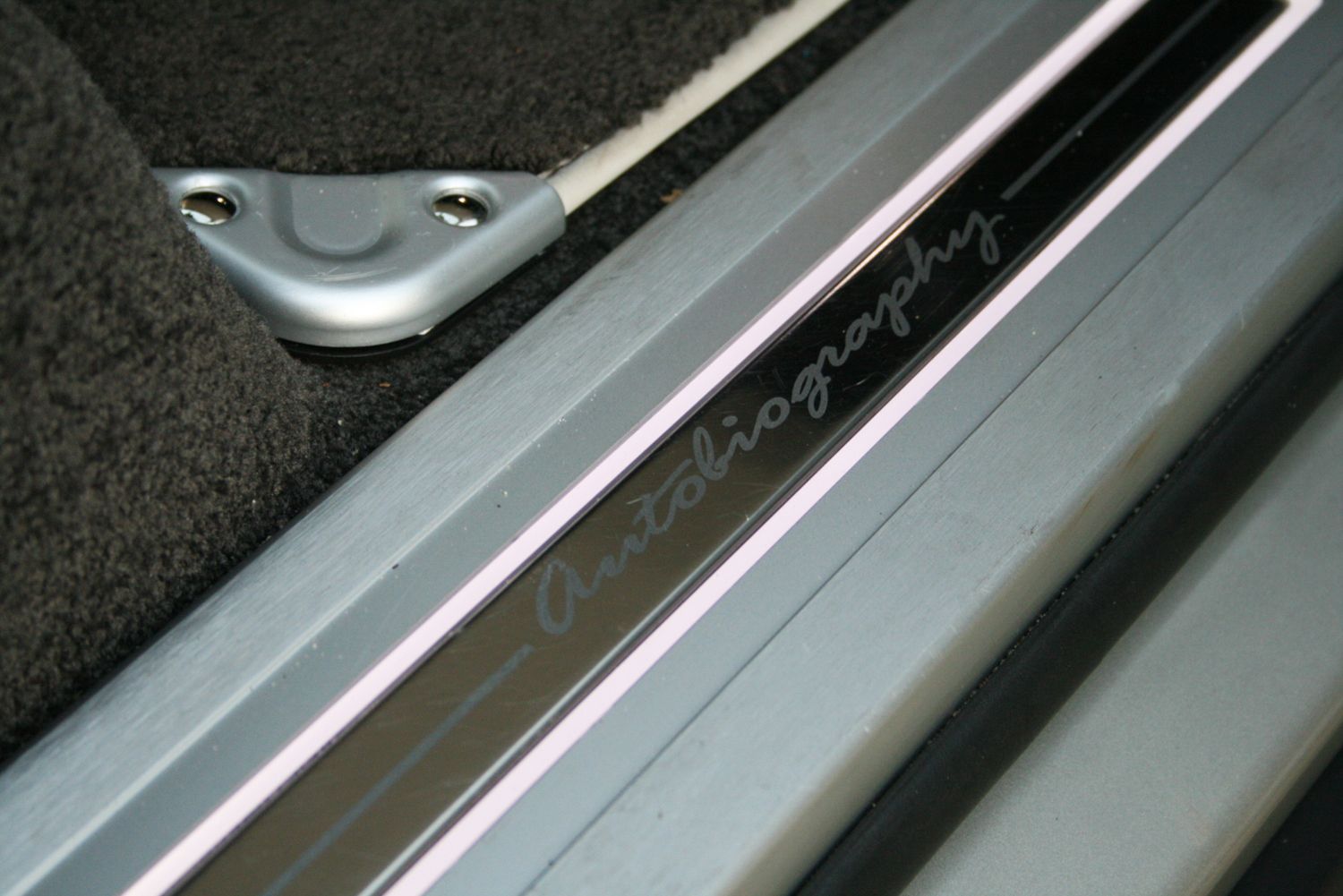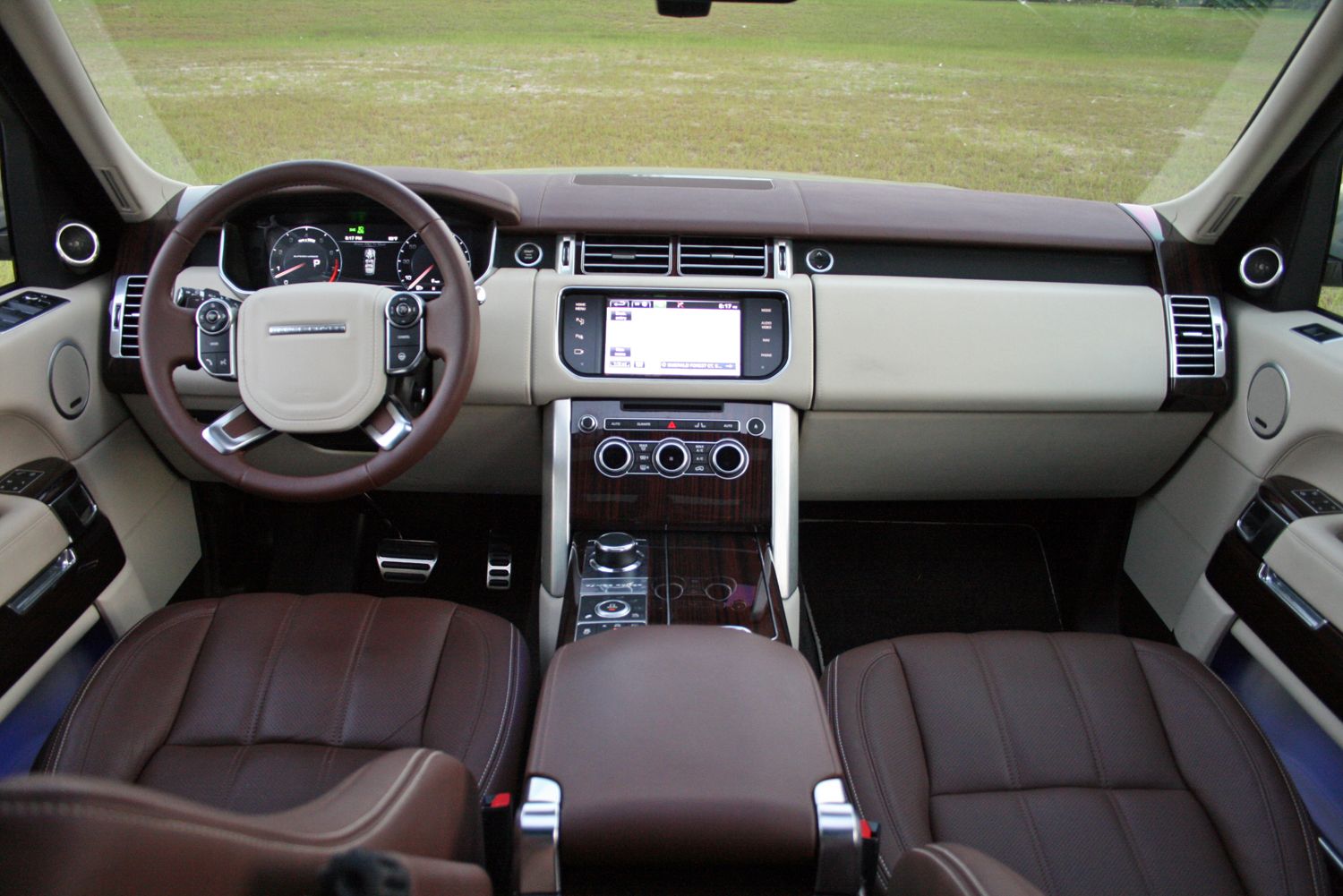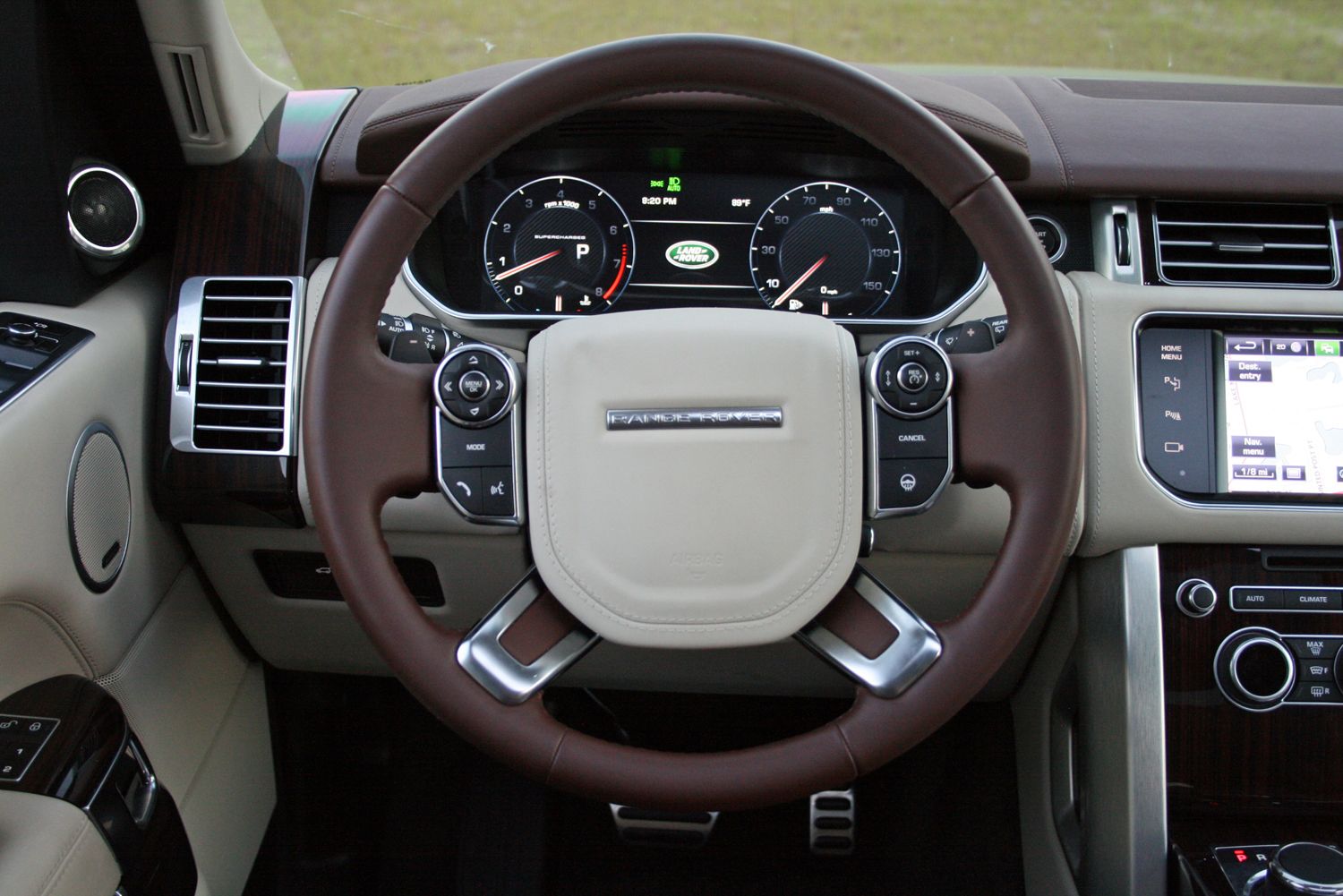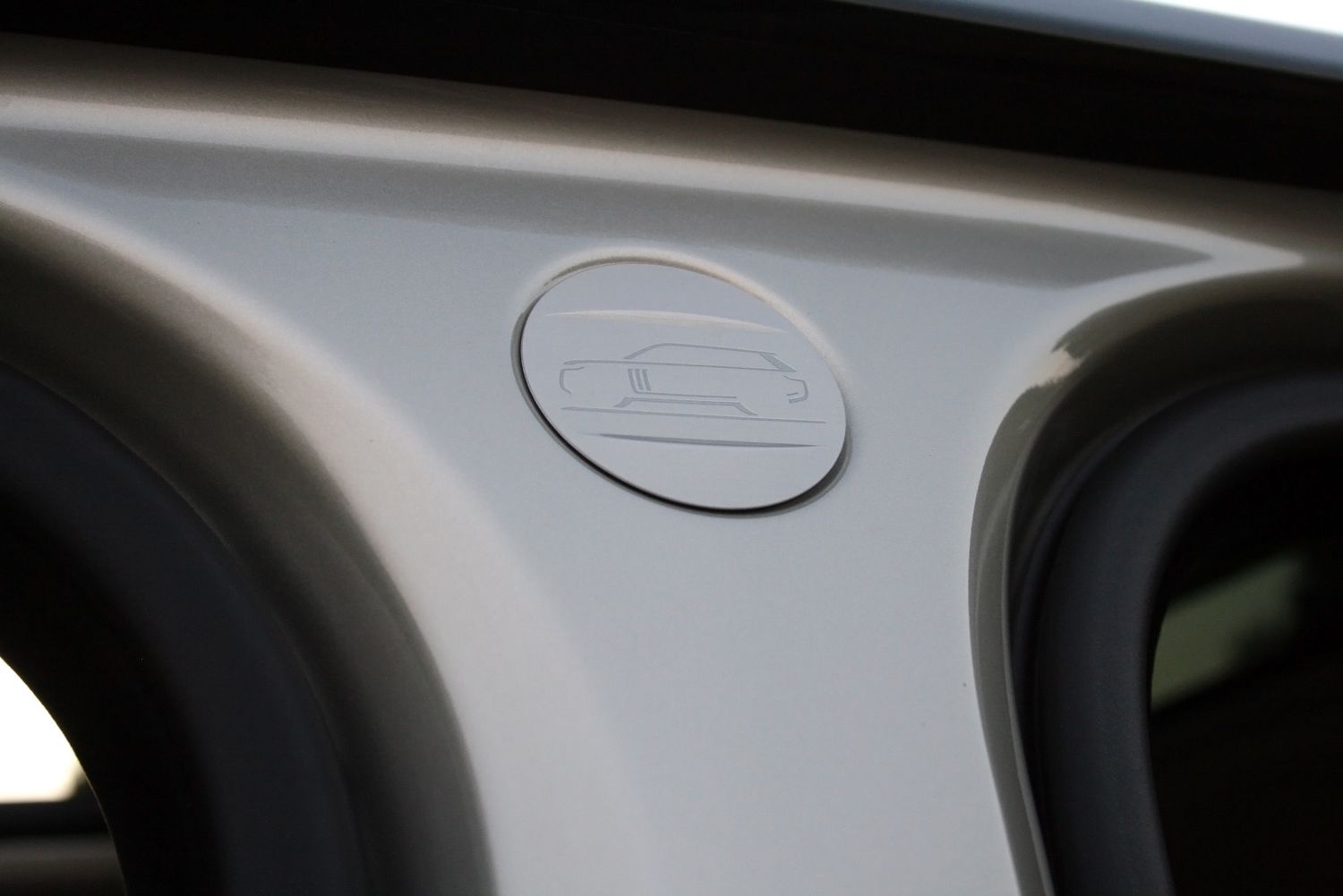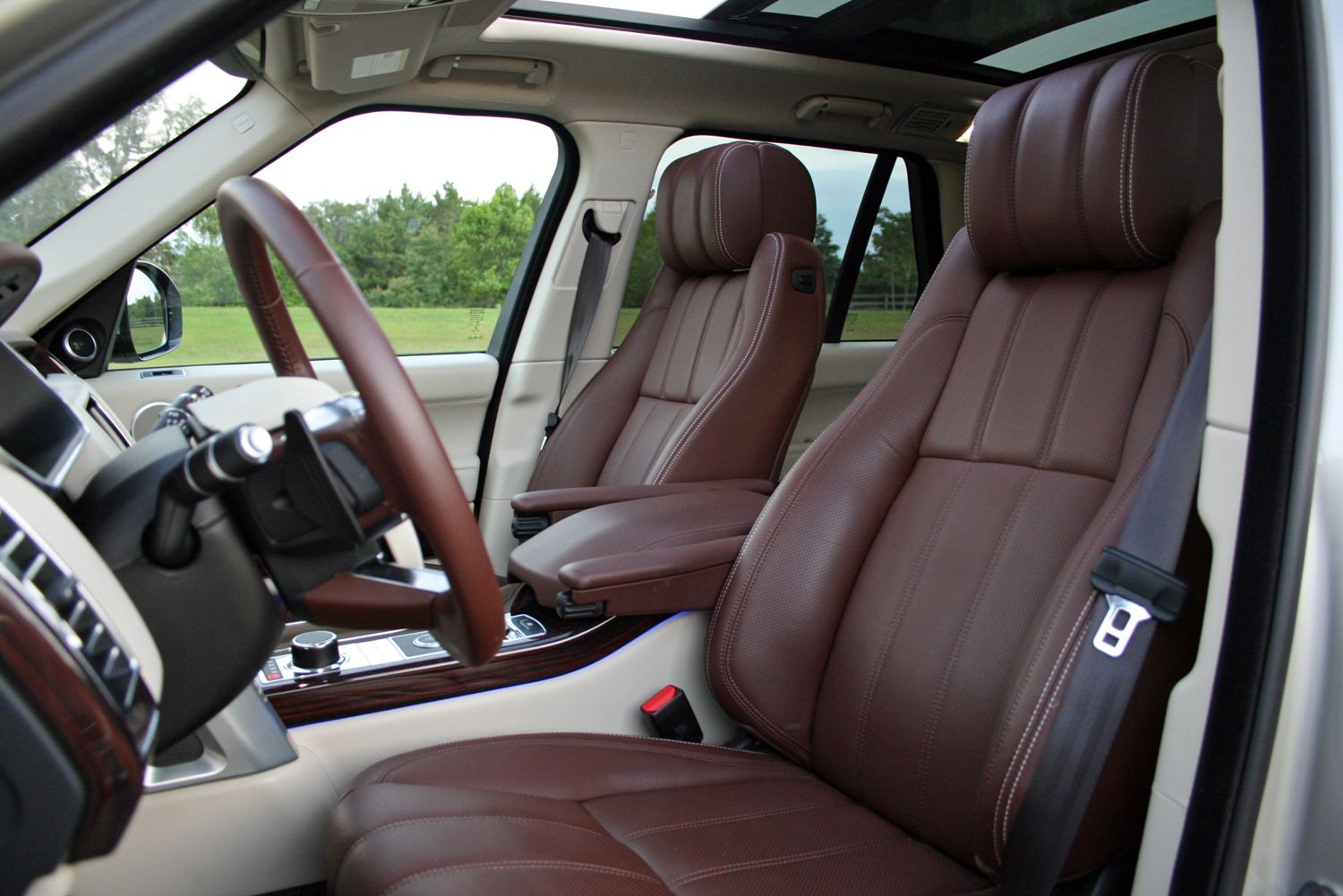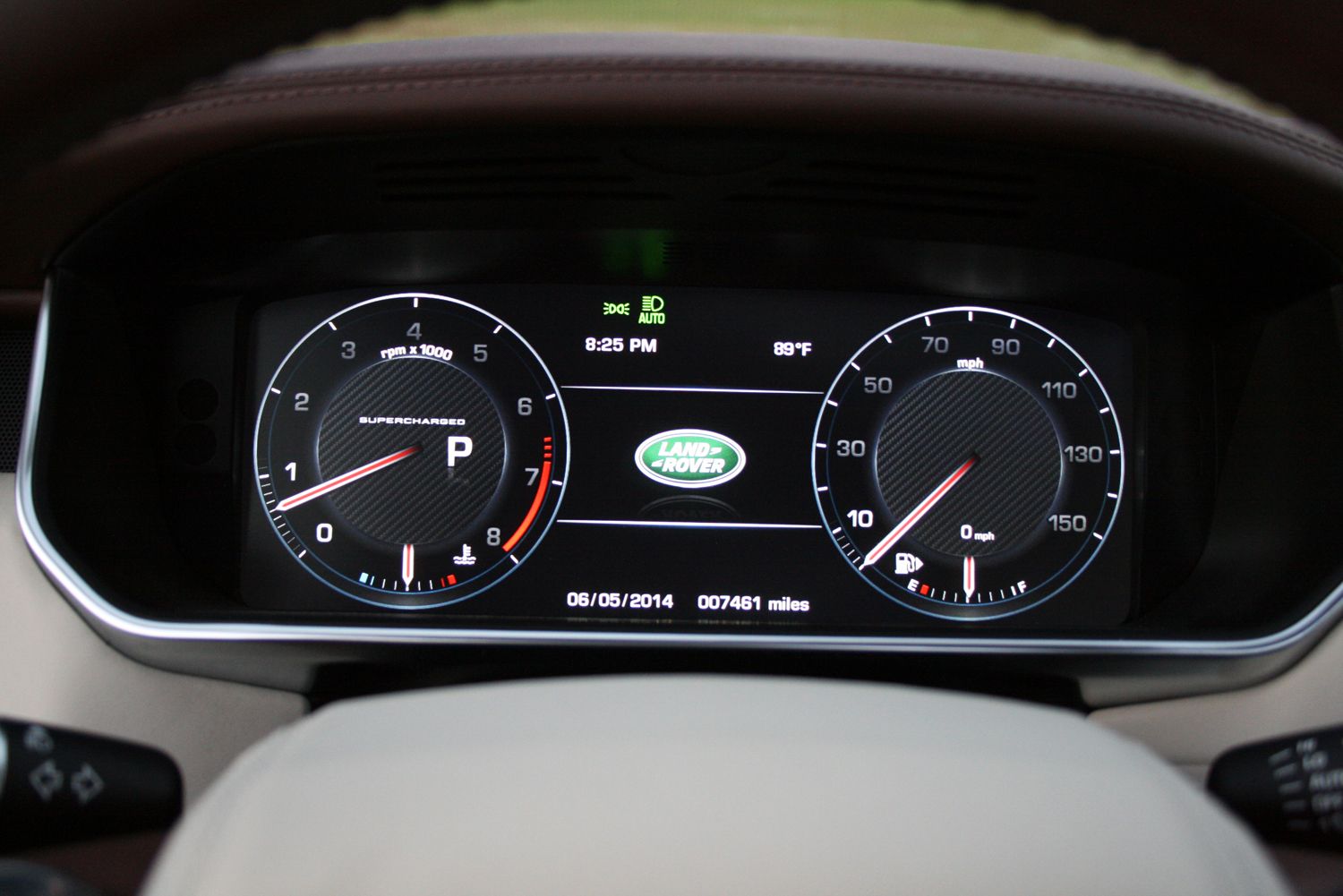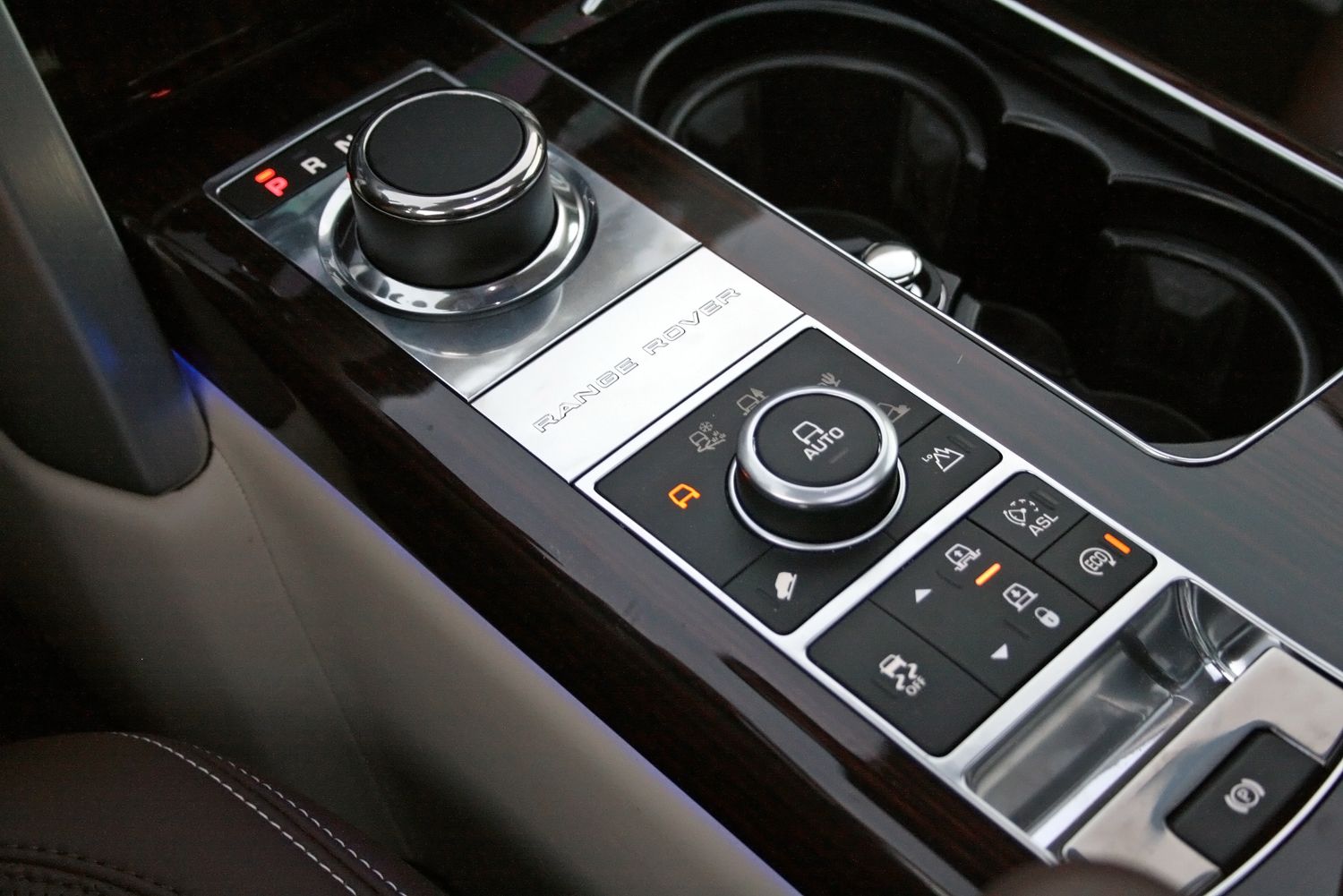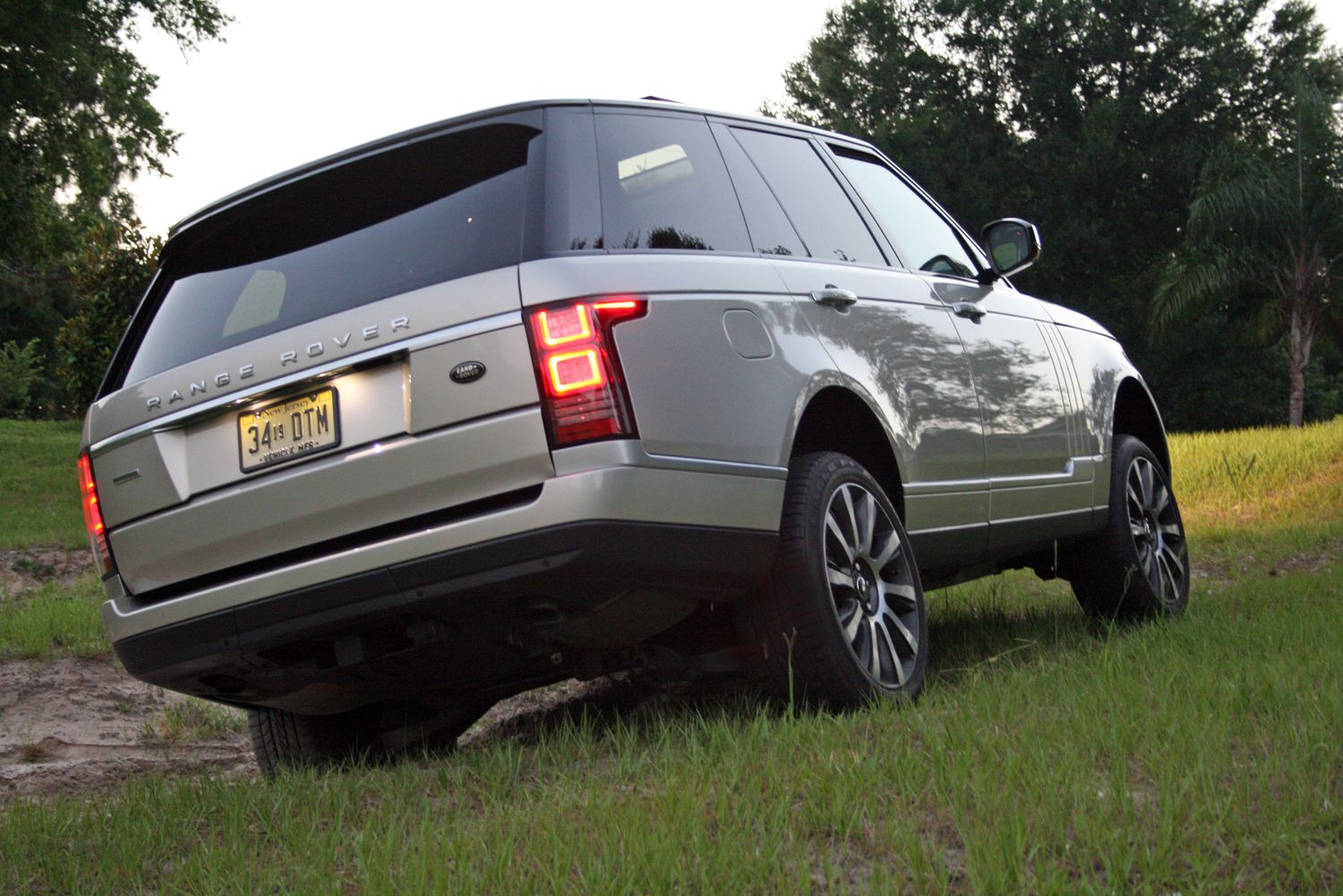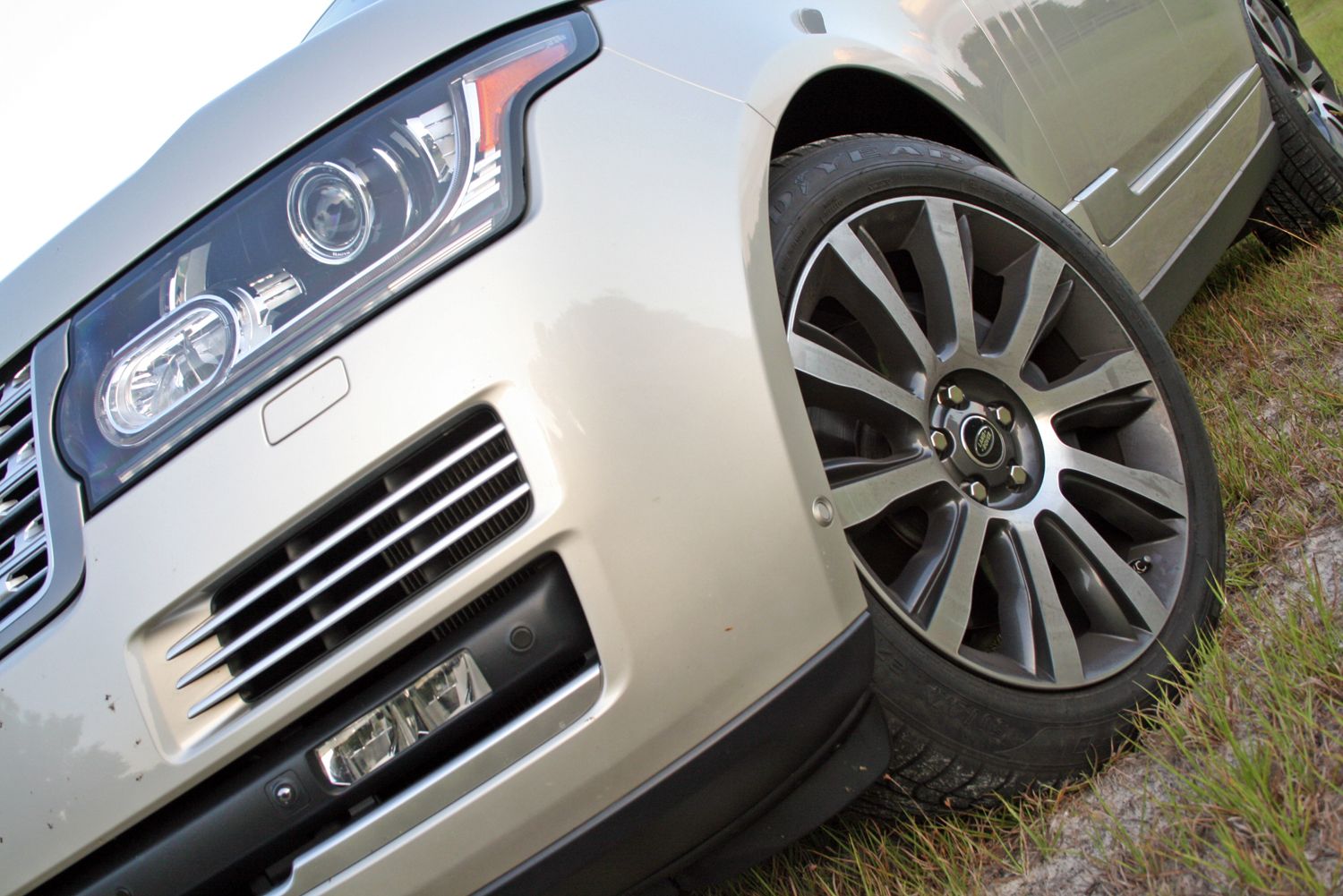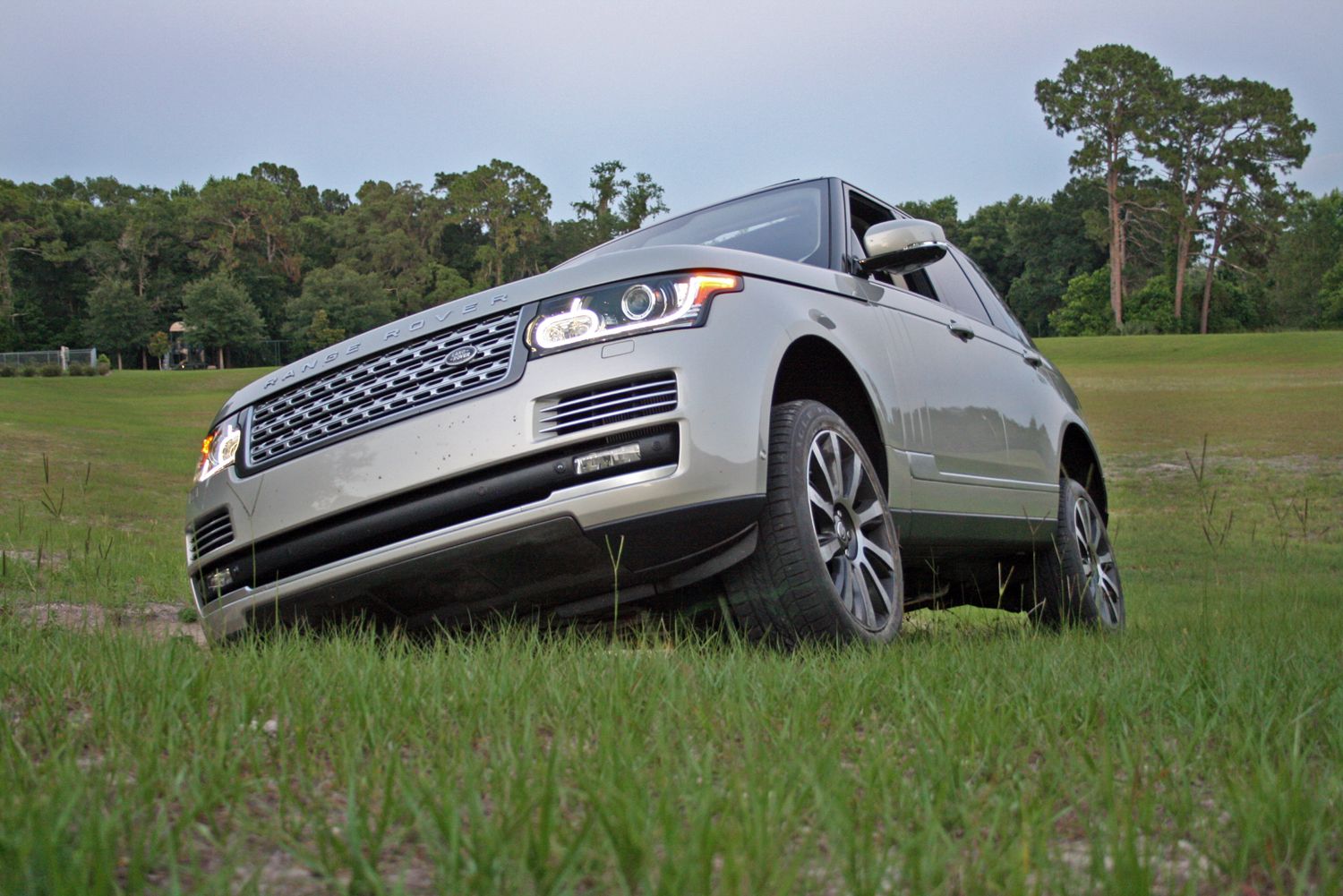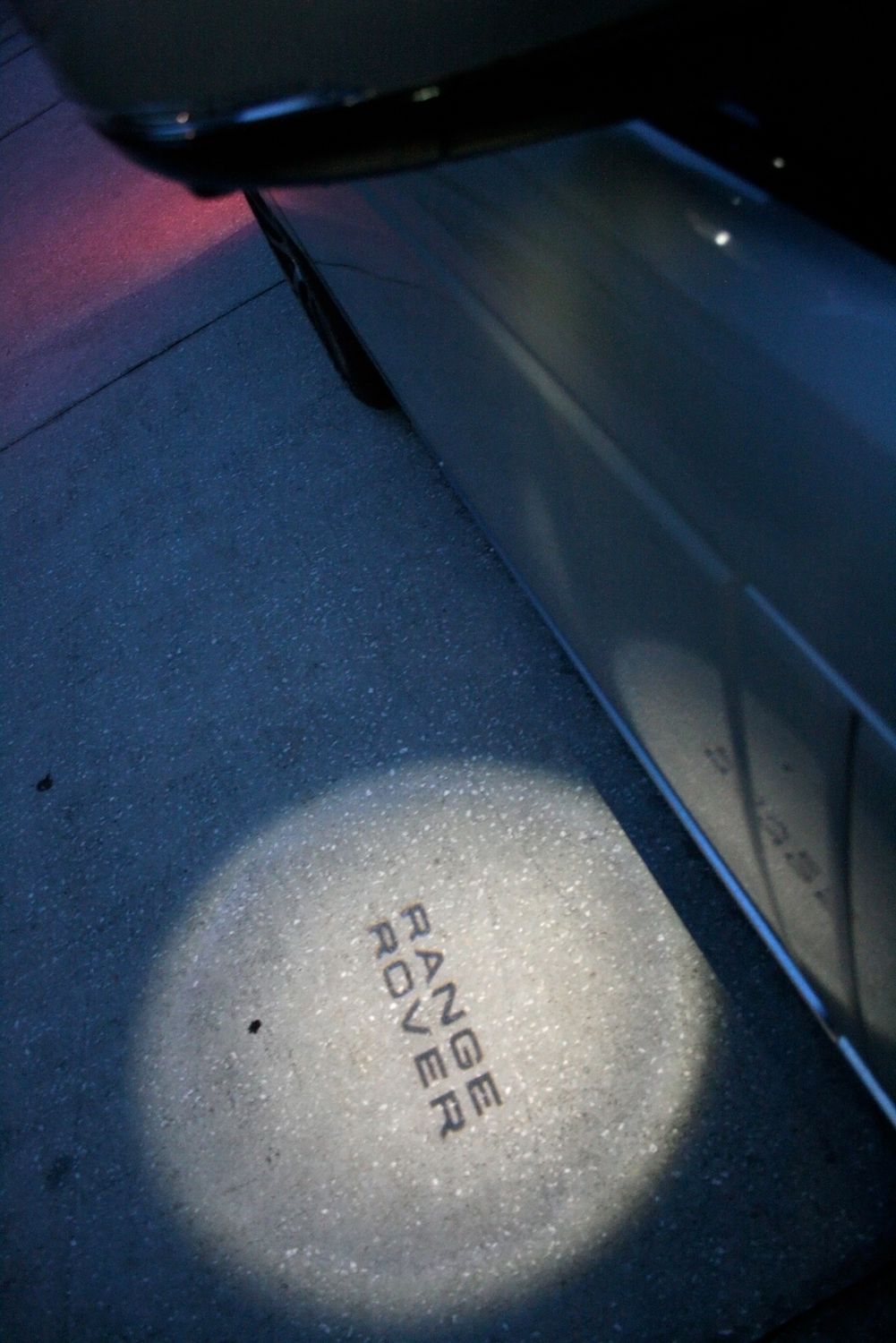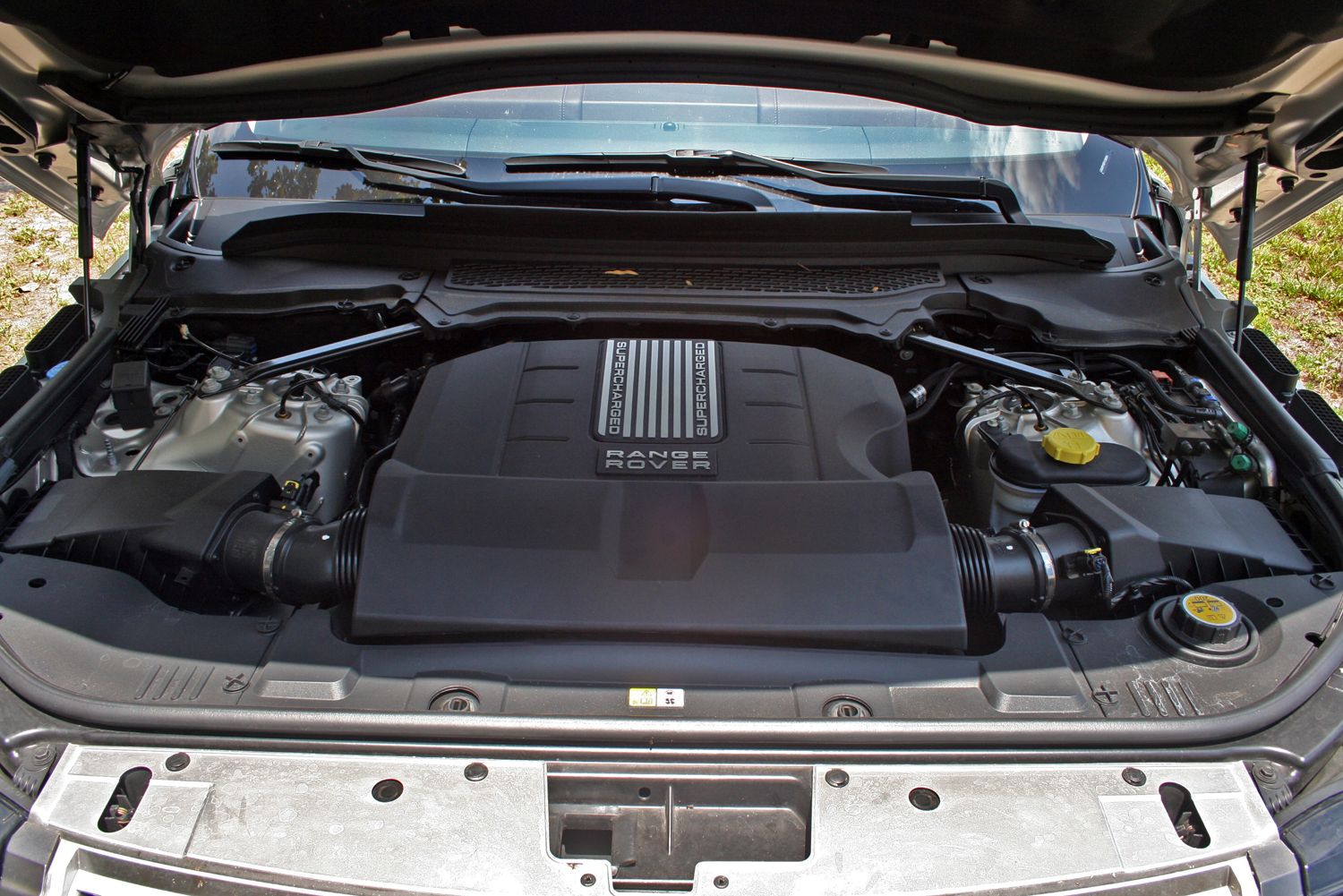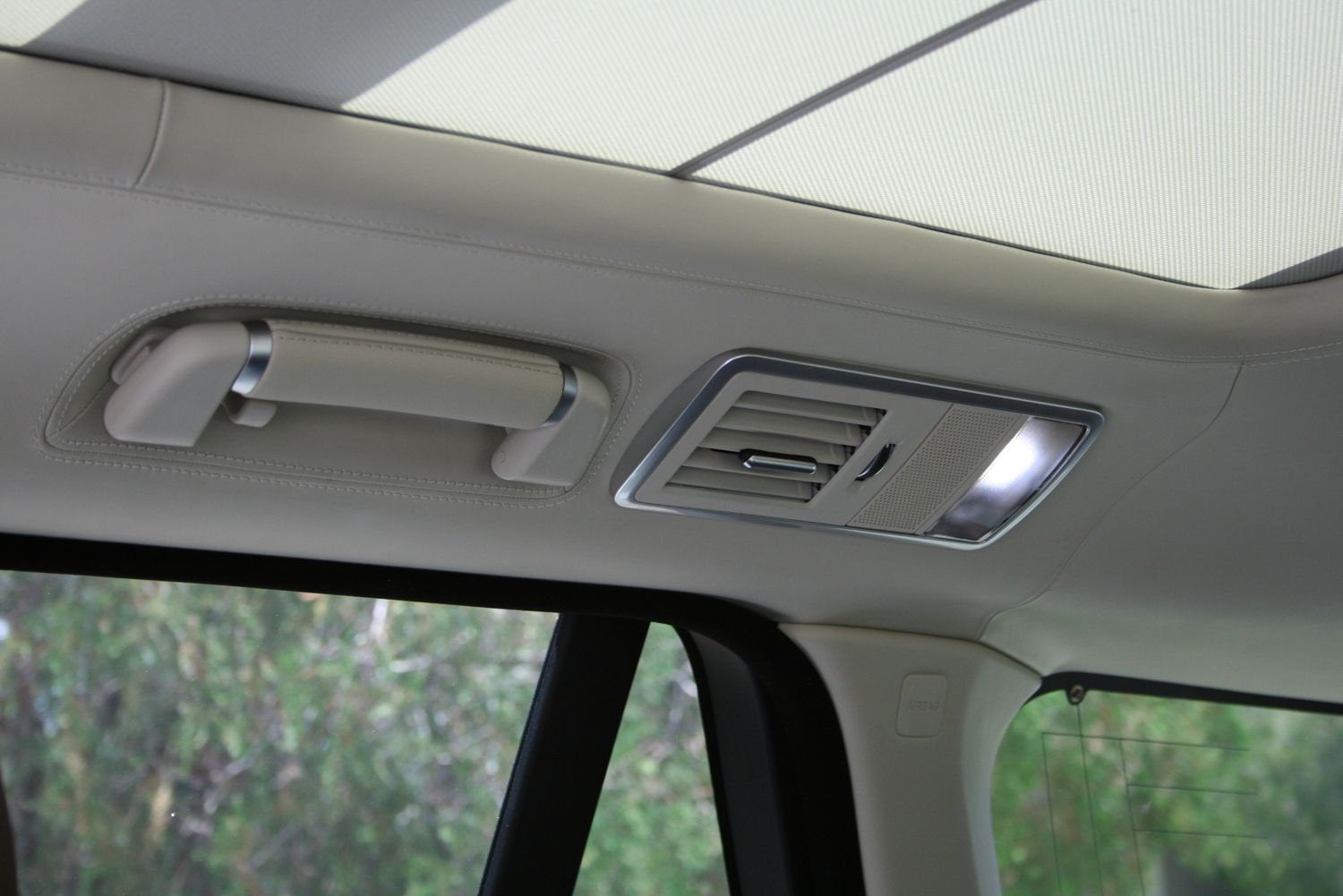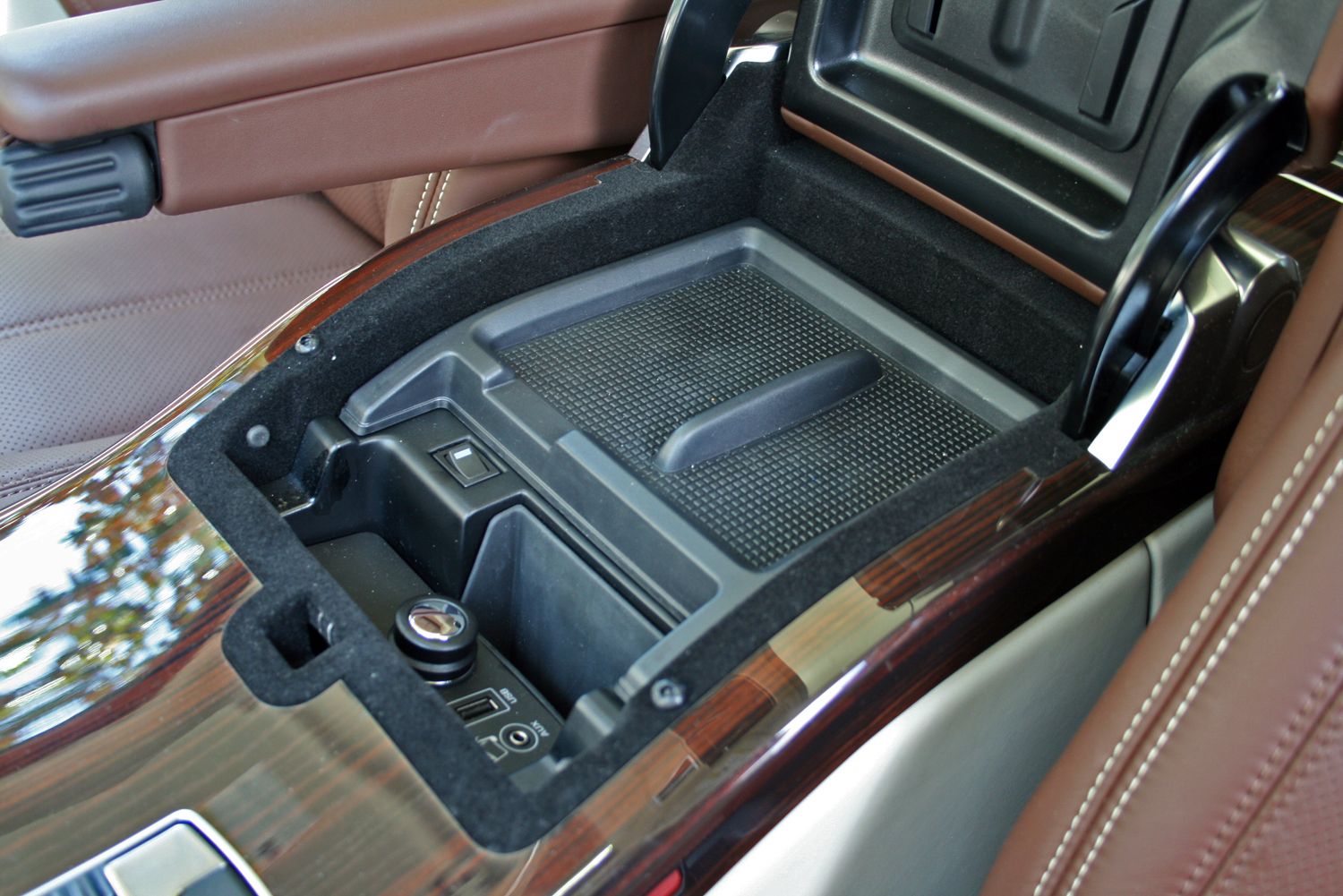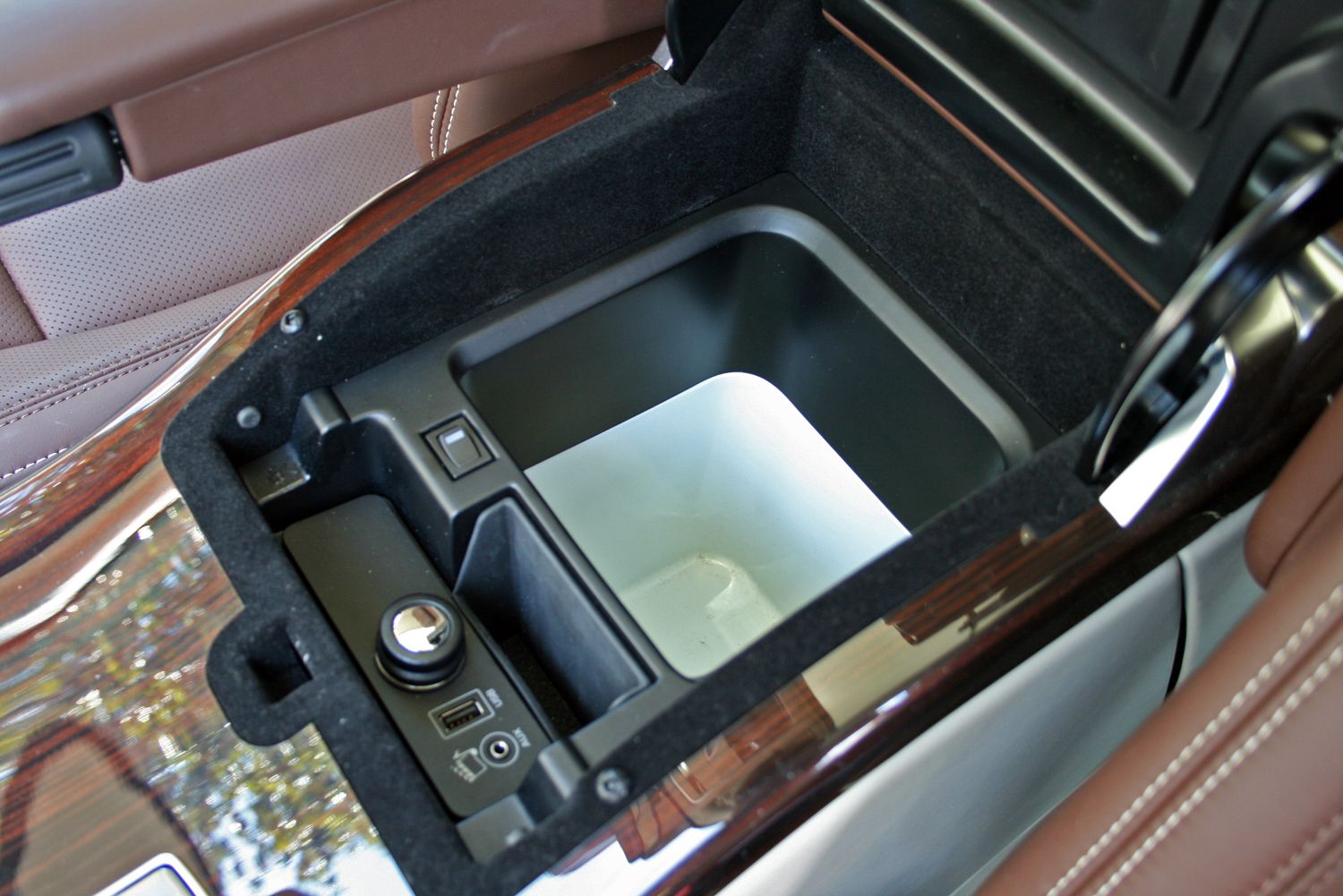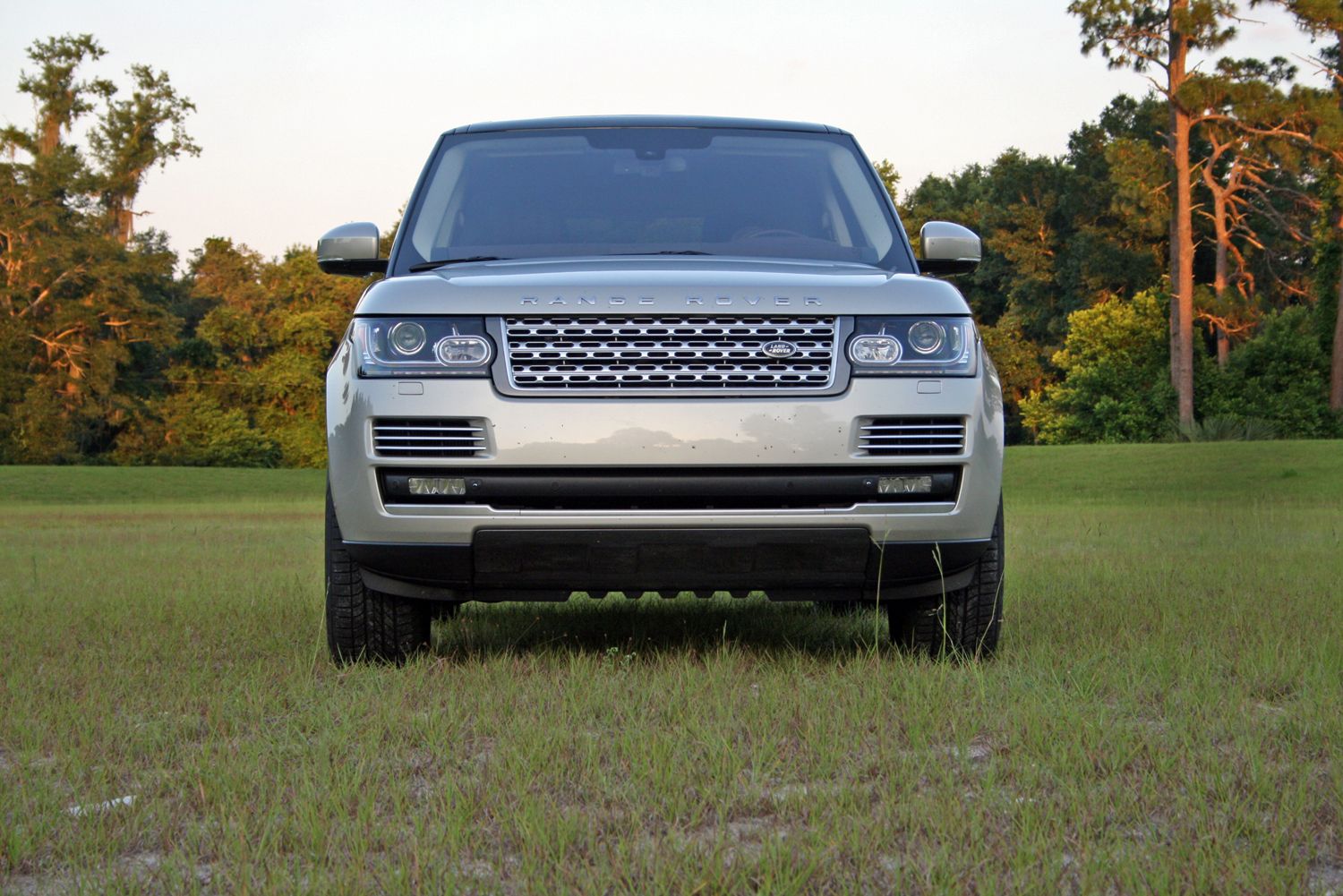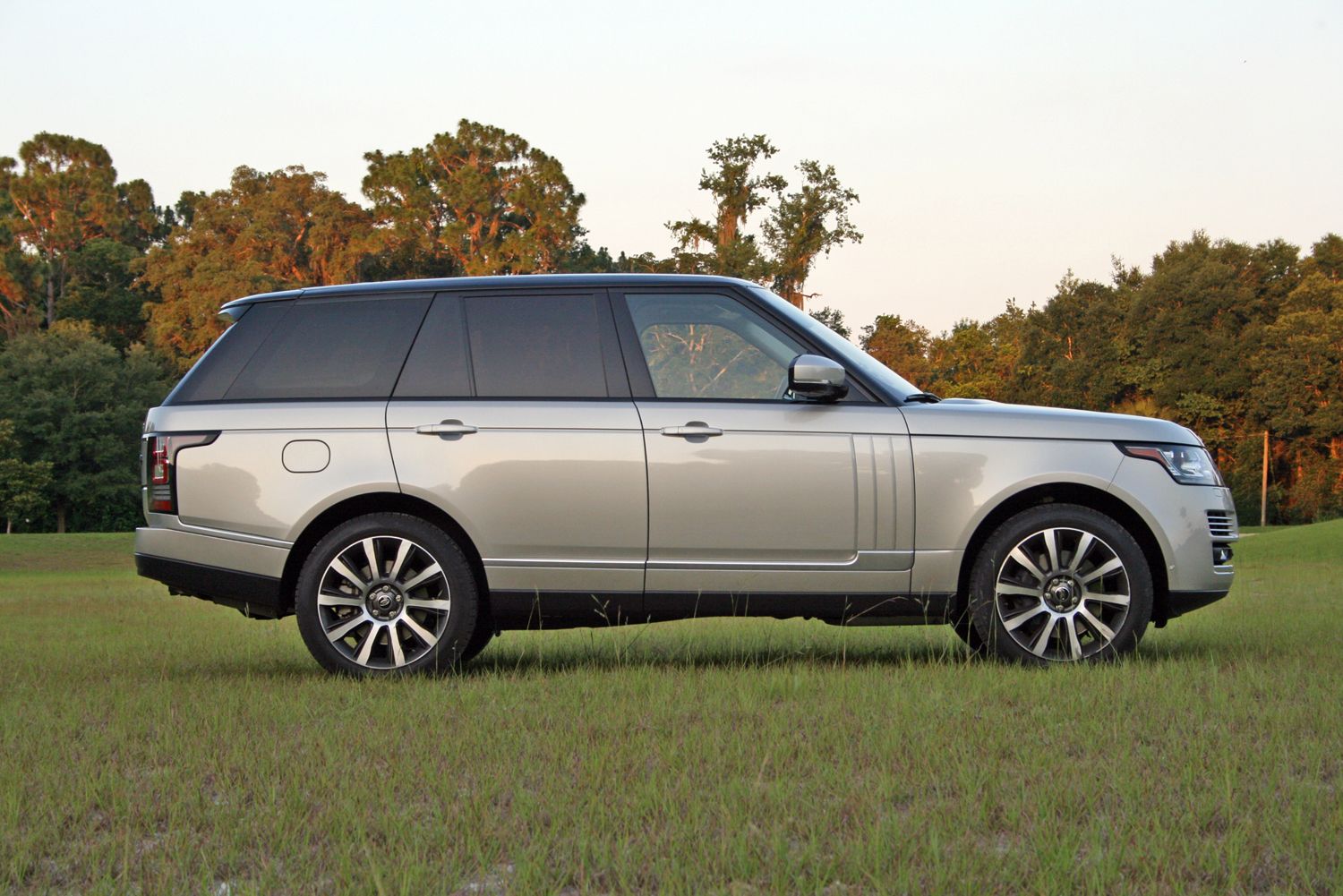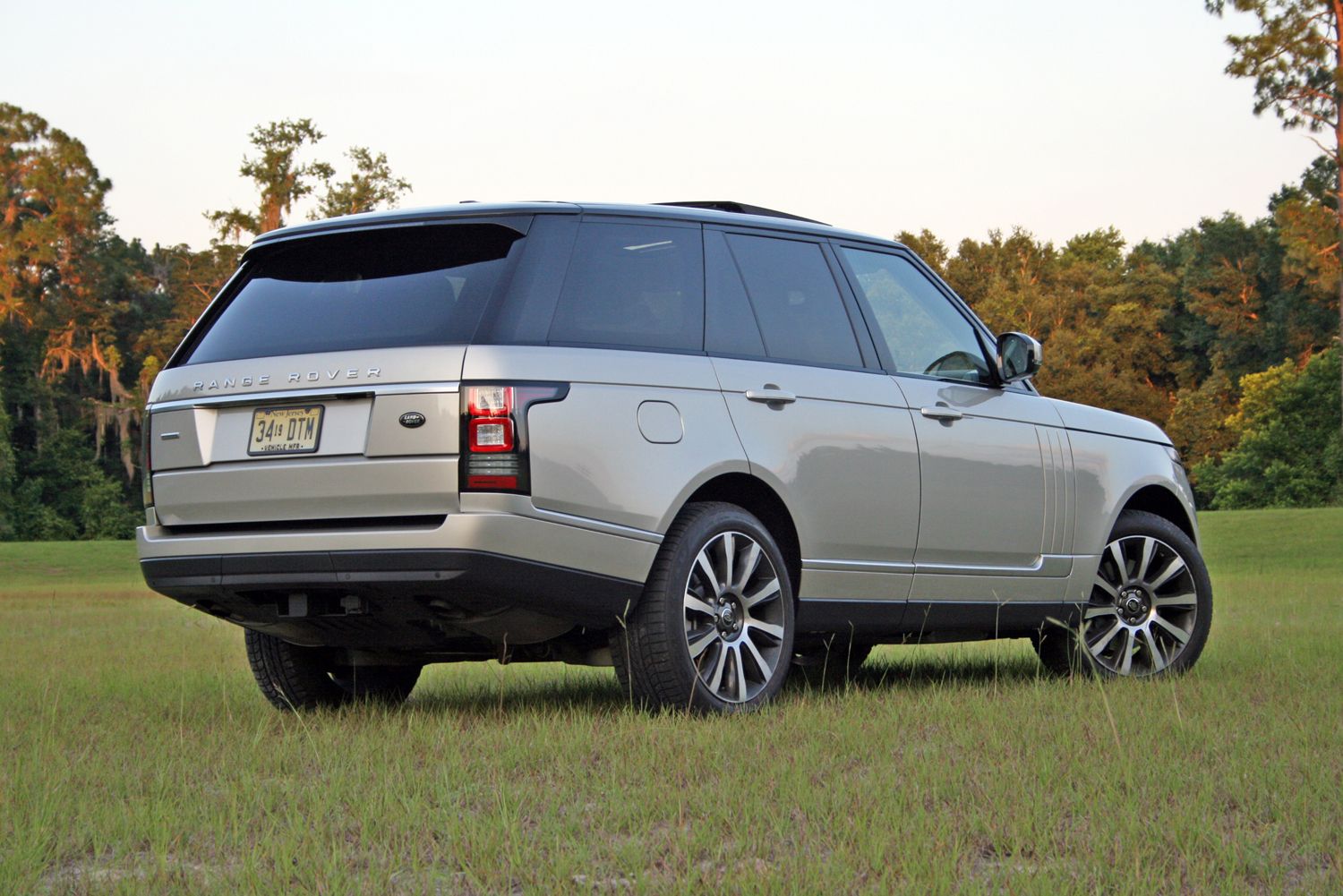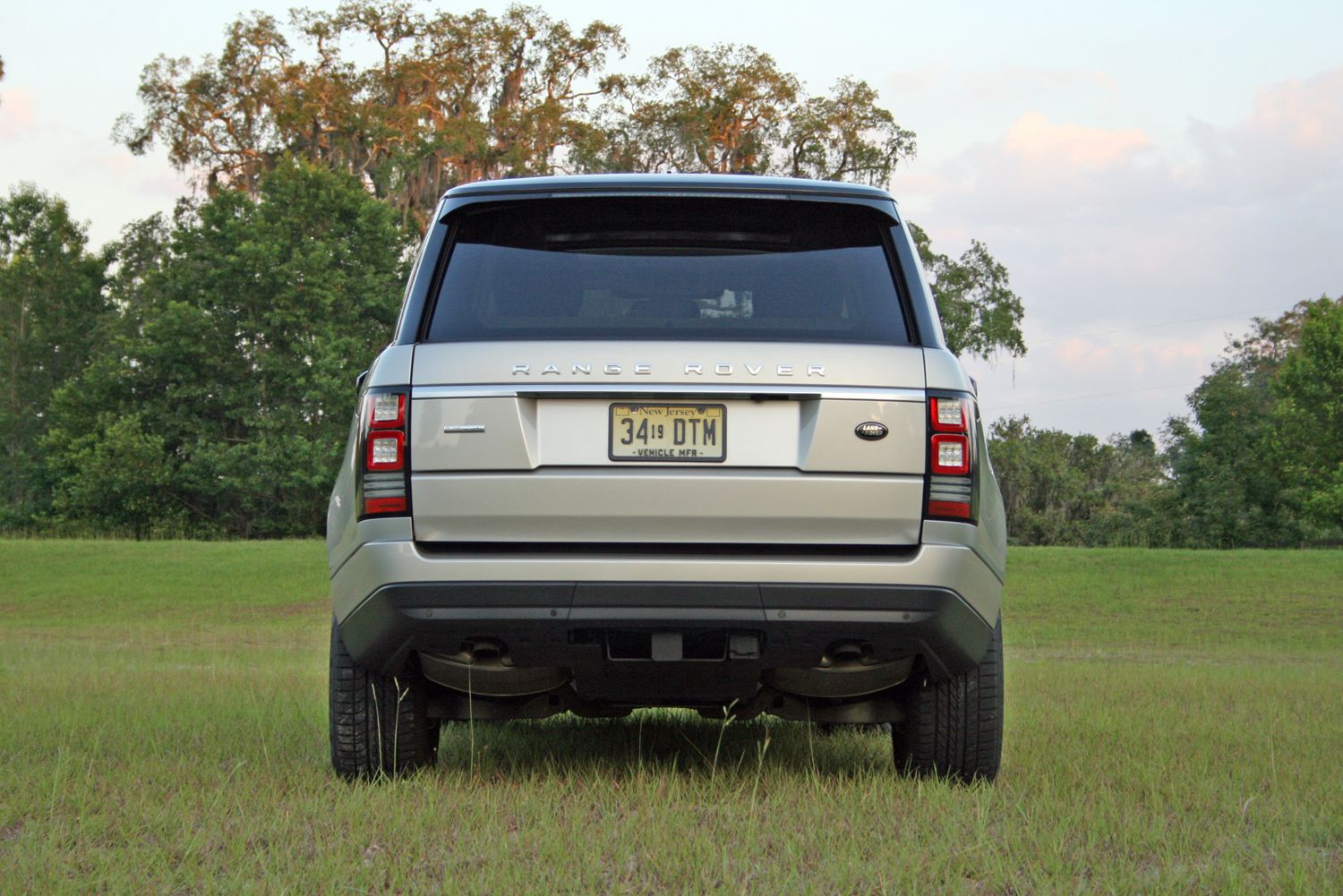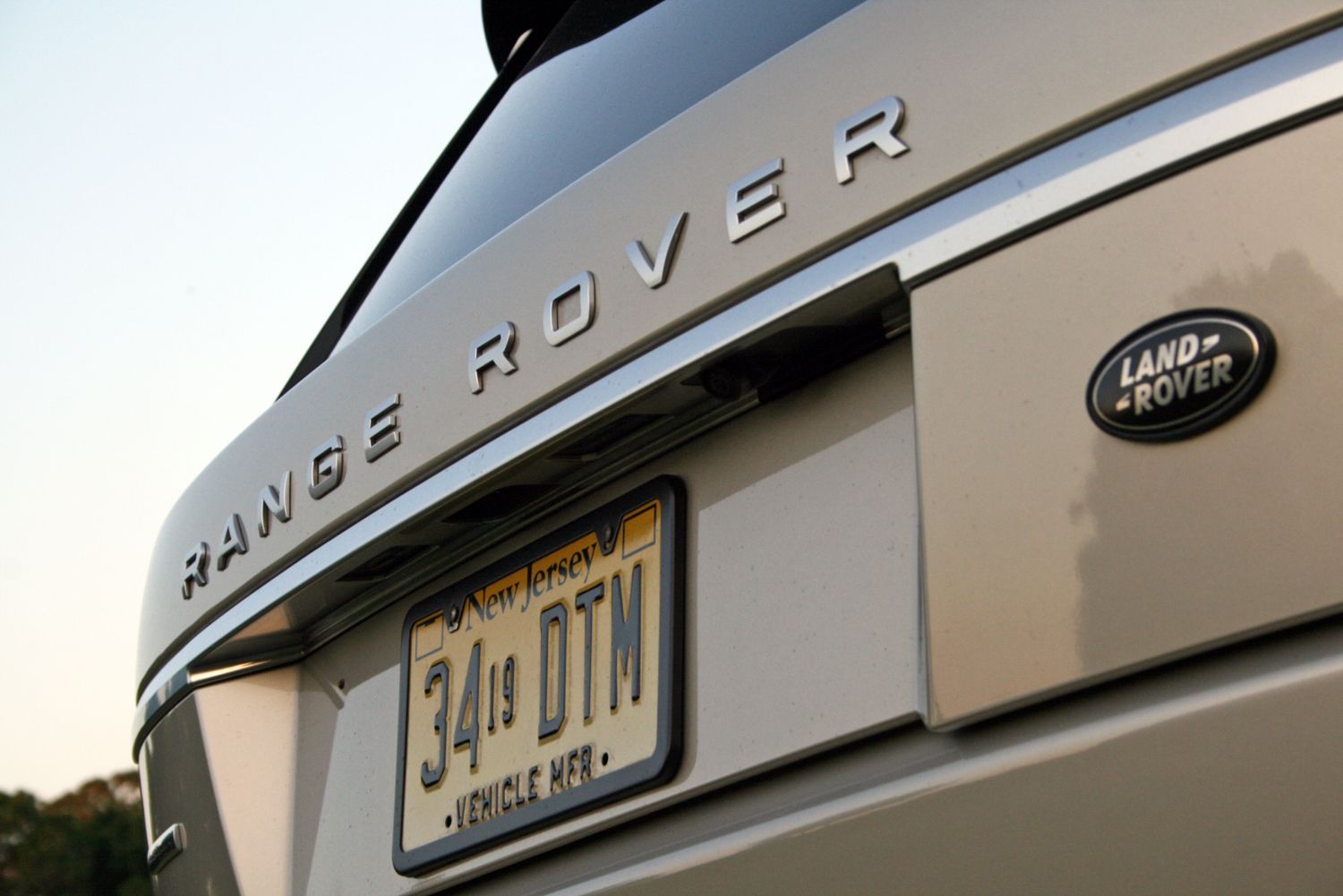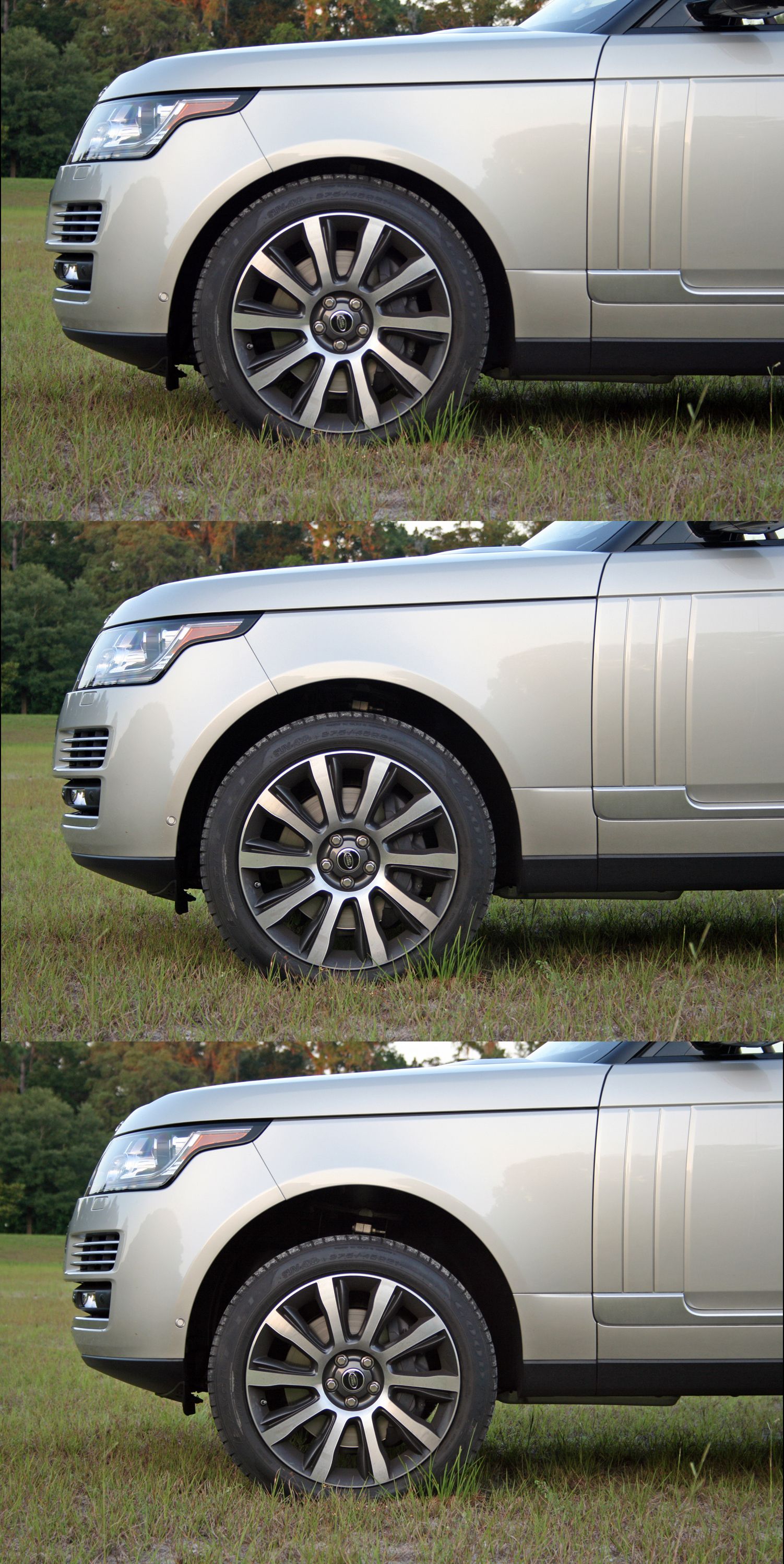Ever since the Land Rover’s->ke46 Range Rover trudged over its first rough ground in 1970, the SUV has been leading the pack in terms of off-road ability and useful amenities wrapped in a utilitarian package. Originally only sold outside the United States, the Range Rover->ke469 didn’t make its first official (and non gray-market) U.S. sale until 1987. Since then, the Range Rover has undergone three generational changes, with each becoming more luxurious than the last. The fourth-generation Range Rover debuted for the 2013 model year with a heavily revised and highly stylized design, and a more rounded, aerodynamic look.
I recently spent a week getting to know the Brit inside and out. My tester came nearly fully stocked with every conceivable option available from Land Rover, including the ultra luxury->ke505 Autobiography Package. The list of amenities reads like a dream car wish-list. Full Semi-Aniline leather seats; rear seat entertainment package; 18-way power front seats with memory, massage, heating, and cooling; 1700-watt, 29-speaker Meridian 3D surround sound system; exterior Surround Camera System; Adaptive cruise control; Parallel Park Assist; four-zone climate control; and Adaptive front headlights. And that’s just the most notable of the optional extras.
The list of standard features is twice as long and includes things like the 12.3-inch TFT gauge cluster screen, the full panoramic glass roof, 21-inch alloy wheels, permanent four-wheel-drive with Land Rover’s Terrain Response System, and of course, power everything.
Speaking of power,->ke507 the Range Rover had no shortage of it under its aluminum hood. Perched inside is a supercharged, 5.0-liter V-8 cranking out 510 horsepower and a rock-crawling 461 pound-feet of torque. Guzzling back the required premium gasoline, the massive 5,100-pound SUV sprints to 60 mph in a scant 5.2 seconds. To say the Range Rover Autobiography is an exercise in excess is an understatement, but for a select number of buyers, it combines the right amount of high-end luxury with the go-anywhere capabilities Land Rovers are known for.
Click past the jump for the full review of the 2014 Range Rover Autobiography
2014 Range Rover Autobiography - Driven
- Make: Array
- Model: 2014 Range Rover Autobiography - Driven
- Engine/Motor: V8
- Horsepower: 510
- Torque: 461
- Transmission: eight-speed auto
- [do not use] Vehicle Model: Array
Exterior
The new, fourth-generation Range Rover enjoys a much smoother exterior than its predecessor -- a look that gives the SUV a more luxurious appearance to match its interior. The rounded nose is ornamented with several chrome accents, including the razor-like grille. The HID headlights and LED daytime running lights further help its up-standing appearance. The large, 21-inch, aluminum- and black-faced wheels look great, but are rather vulnerable to obstacles both on and off road. In fact, my tester already showed signs of kissing a curb.
While the front is updated with modern looks, the Range Rover’s side profile is rather familiar. The forward-slanted rear window meets the downward-sloping roofline at the same angle that Range Rovers have done for years. It helps tie in the SUV’s rich past with new luxury livery.
Other strong body lines give character and shape, especially the beltline crease that runs from the headlights back through the door handles and around to the rear liftgate. Like the front, the rear has been smoothed out, yet it still retains that classic look. Dual exhaust tips barely poke out either side of the receiver hitch and the entire lower fascia is sloped upwards for an increased departure angle.
As an option, the roof is coated in a contrasting black paint. The look helps lower the SUV’s visual center of gravity, though the black roof doesn’t outright call attention to itself. As a standard feature, the roof is fitted with a massive panoramic glass panel that runs over the entire occupant compartment. Even more, it’s split in half, with the first half sliding neatly over the second, revealing a significant opening over the front row seats.
Interior
Inside the Range Rover Autobiography is nothing but pure luxury. Mocha-colored soft leather seating matches the mocha leather-wrapped steering wheel and upper dashboard, along with matching high-pile carpet and center console leather accents. The tan leather than is stitched everywhere else looks amazing though it’s rather quick at showing dirt -- while it’s just as easily cleaned. The dark wood trim pieces live on the center console and door panels, and are accented by bight aluminum pieces. The look is nothing short of fantastic.
Actually sitting with the Range Rover is terrible experience. It’s terrible only because it quickly jades you to nearly every other automotive interior in the industry. Power, 18-way seats with a full back massaging function, along with a heating and cooling, keep all four passengers relaxed. A heated steering wheel eliminates cold hands and independent, four-zone climate control means no one is complaining about the temperature. Even the direction of airflow is independent, meaning your passenger can keep their feet warm while you direct nothing but cool air towards your face.
The Meridian 3D surround sound stereo system keeps the trend going. It pumps 1,700 watts through 29 speakers throughout the cabin, turning the SUV in a concert hall. James Horner’s Apollo 13 theme never sounded so good.
Controlling that stereo system is an eight-inch, touch-sensitive infotainment system. The clever electronics house controls for nearly every electronic device in and around the Range Rover. The navigation system works well and displays an easy-to-read map with decent resolution. Also included are secondary controls for Land Rover’s Terrain Response off-road system. From the screen, you can keep track of the position of each tire, including its vertical and steering position. An overhead view of the vehicle shows exactly what differential is locked and what suspension setting is selected. External cameras on the front bumper and side mirrors help keep track of nearby obstacles and the images are neatly displayed on the screen.
While the infotainment system works well, it isn’t without faults. First, it would be very handy to have a forward-mounted camera for viewing upcoming off-road obstacles, much like the Ford Raptor. Second, the rear-seat entertainment system needs to be reconfigured each time the 5.0-liter V-8 is shut off. That means going deep into menu setting to select which DVD screen would be the output and what media source would be the input. Why can’t the system recognize a DVD is already cued to play and retain the last-used settings? Frustrating, to say the least.
The driver is treated to a main gauge cluster comprised of a single 12.3-inch TFT screen. The digital versions of the analog speedometer and tachometer work well, though it would be nice to have a larger digital speed readout available. In between those gauges is an area dedicated to vehicle information, including radio stations, vital powertrain stats, and Terrain Response settings. The screen did become washed out a few times in harsh, direct sunlight, but otherwise was legible the entire time. My polarized sunglasses didn’t sour it either.
Overall, the interior’s ergonomics are spot-on with all the controls easy to each and easy to operate. And like other rotary gear selectors on the market, this one works well and gives a solid response to each gear position as you rotate through the options.
Drivetrain
Just like the rest of the Range Rover, the equipment lying under the hood is over-the-top. It’s a 5.0-liter V-8 getting extra boost from a supercharger. The engine is good for 510 horsepower and 461 pound-feet of torque. Mated to that is an eight-speed automatic transmission sourced from ZF. Behind that is Land Rover’s complex, permanent all-wheel-drive system with low range and two locking differentials.
Around town, the drivetrain is wonderfully smooth and is easy to control. Zero throttle tip-in means a gradual throttle response and no jerky starts. The ZF transmission shifts smoothly and precisely between gears, both when lackadaisically moving about and when under full throttle. Paddle shifters bring manual gear selection to the driver’s fingertips. In manual mode, shifts happen nearly as fast a dual-clutch.
Helping to conserve the Range Rover’s premium gasoline supply is an automatic stop/start function for the engine. With a warm engine and the vehicle at a stop, the engine will simply turn off while all the other function within the cabin remain powered, including the air conditioning. Letting off of the brake pedal immediately turns the engine back on. While the system is great in theory, in practice its restarts are somewhat clattery and unsettling. I found myself turning the system off a few times while sitting in traffic.
Though the Range Rover is a great in-town run-about with plenty of power for red-light drag races, the real story lies in the SUV’s ability to tackle the roughest terrain Mother Nature can throw its way. New for Range Rover’s fourth generation is Terrain Response’s automatic mode. The system works on its own to deliver the optimal settings for whatever terrain the vehicle finds itself on. In the traditional mode with the selector knob in the raised position, the driver selects between General; Grass/Gravel/Snow; Mud and Ruts; Sand; and Rock Crawl modes. Also selectable are low range, hill decent control, and the suspension ride height.
With each setting, Terrain Response changes settings with the gas and break pedal inputs, ABS and ESC functions, and electronic differential locks to provide the best possible setup for the particular terrain. Even when not off road, the air suspension offers an ‘access height’ for easy entrance and exit of the SUV.
Driving Impressions
The Range Rover is a surprising handler when push comes to shove. With the air suspension in its normal ride height setting, the SUV is far more confident in the corners than logic would dictate. Combine that with the 5.0-liter V-8’s 510 horsepower and the ‘Rover isn’t a bad performance machine. Granted, the Range Rover Evoque and Sport models are far better at the fast-paced stuff, but the top-dog Range Rover still holds its own.
Like I mentioned before, the throttle response is slow and predictable. But don’t read that as sluggish – it’s exactly where it should be. Normal acceleration is done smoothly and with no fuss. Bury the pedal in the high-pile carpet, however, and the SUV shoots forward in a manner unbecoming of more mundane sport utilities. Under hard acceleration, the front exhibits lift similar to a 1960s muscle car->ke507 picking its front tires off the ground at the drag strip. It’s certainly an interesting feeling.
Outward visibility is downright fantastic. With its high ride height and massive windows, it feels more like riding a motorcycle than driving a car. On the other hand, rearward visibility is a little on the obstructed side with the rear window’s small area and slanted design. The rear spoiler also partially obstructs the view.
With any large luxury vehicle like this, fuel economy takes a back seat to performance. The EPA rates the supercharged V-8 Range Rover at 13 mpg city, 19 mpg highway, and 15 mpg combined. During my week with the ‘Rover, the trip computer showed an average of 16 mpg.
Pricing
Now we’ve come to the part where things get, well, expensive. Luxury by definition is never cheap, and the Range Rover -- dressed in its Autobiography tuxedo -- proves that to be wallet-explodingly true. Staring at the bottom, a ‘base’ Range Rover starts at a cool $84,225. My tester, however, has a base price of $99,100.
Then comes the Autobiography Package at a whopping $36,000. Add in the Executive Class Rear bucket seats for $1,800 and the destination charges at $895, and the grand total comes to $137,795.
Competition
2014 Porsche Cayenne Turbo
Much like the Range Rover, the Cayenne is a good all-rounder with roots firmly planted in Porsche’s performance department. Powered by a 4.8-liter V-8 touting twin turbochargers, the engine is good for 500 horsepower and 516 pound-feet of torque. Mated to an eight-speed Tiptronic S automatic transmission, the Cayenne Turbo will rocket to 60 mph in just 4.4 seconds.
A permanent all-wheel-drive system puts power to the road or dirt. The Cayenne also comes equipped with an air suspension system that will vary the vehicle’s ride height depending on situations. A locking center and rear differential that ensure all four tires are spinning together. While the Porsche offers close competition to the Range Rover in terms of luxurious amenities, the Audi Q7 and Volkswagen Touareg are built on the Cayenne’s same platform and offer many of the same capabilities.
The base price for the Cayenne Turbo starts at $110,400 and goes up from there.
2014 Mercedes-Benz ML63 AMG
The Mercedes ML63 AMG is a solid performer when there are roads involved in the competition. Though it’s got a permanent all-wheel-drive system, Mercedes has elected to decrease the ML63’s off-road abilities for more on-road, performance-minded characteristics.
Power come from a 5.5-liter V-8 with two turbos hung off the side. It’s good for 518 horsepower and 516 pound-feet of torque, and rockets the SUV to 60 mph in a scant 4.7 seconds. The engine is backed by a seven-speed AMG SPEEDSHIFT automatic transmission that feeds a 40-60 front-to-rear torque split.
Though the ML63 AMG has a great-looking interior, it seems inferior to the Range Rover’s large TFT and touch screens, not to mention the inclusion of hard button within the infotainment system. That helps the Range Rover’s cabin have an extra clean appearance.
The Mercedes ML63 AMG has a starting price of $97,250 but quickly raises with optional extras attached.
Conclusion
Regardless of its large sticker price, the Range Rover proved to be quite the competent vehicle. It did everything I asked it to do and more. It performs well on pavement, off the beaten path, in chauffeuring folks around in the utmost of luxury, and towing up to 7,700 pounds. It weights over 5,000 pounds yet still hits 60 mph in 5.2 seconds. It’s got 21-inch wheels and street tires yet it still climbs its way out of a muddy ditch. While the Range Rover is the most ridiculous overpriced vehicle in some respects, I find it hard to imagine a vehicle so well-rounded. Sure, it might be labeled the "jack of all trades and the master of none," but the ‘Rover does a darn good job at nearly everything a normal owner would put it though.
If you only want to go off road, buy a Jeep Wrangler Rubicon. If you only care to be coddled in the lap of luxury, buy a Jaguar XJ. But if those two worlds somehow must coexist together, the Range Rover finds itself in the happy median.

